
NATURE OF SUMATRA 2020
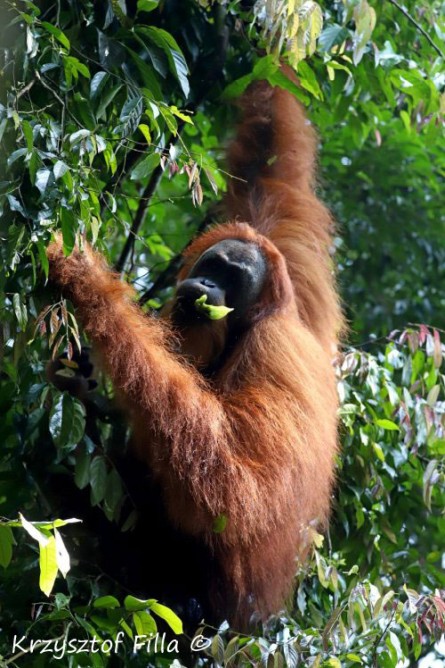
The diet of orangutans consists 98% of plants, out of it 70% are fruits and the rest are leaves, bark of some trees, shoots and roots. The remaining 2% of animal related food are occasional snail, bird's egg or termites.
^ ^^^
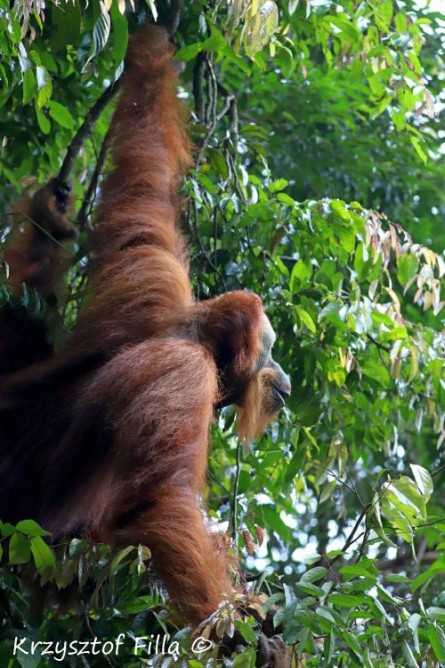
Sumatran orangutan (Pongo abelii) it is a separate species from Bornean Orangutan (Pongo pygmaeus). Apart of some anatomical features their main difference is their demeanour or culture. For example, males from Borneo are loners unlike the Sumatran orangutans, who I have been seeing in a presence of a couple of females creating some sort of harem.
^ ^^^
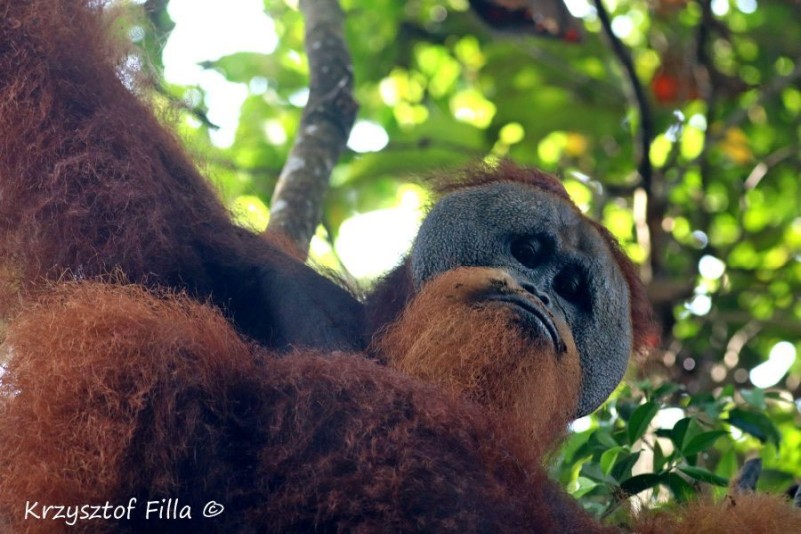
Adult, older males develop cheek pads. These are leathery extensions of their cheeks, that determine the rank and domination of the male in a region. A male weights around 120 kg. and is 170 cm in hight.
^ ^^^

A female orangutan reaches her sexual maturity when she is 12-13 years old. Orangutans have one of the slowest reproduction cycles among all mammalians. Usually in the age of 15 she delivers her first young that rears and educates for 15 years. After 8 years from her confinement, she is able to become pregnant again giving birth to one young. If it happens she delivers twins, one of them is condemn to death. In general, one female can deliver 2-3 offspring during her entire lifetime.
^ ^^^
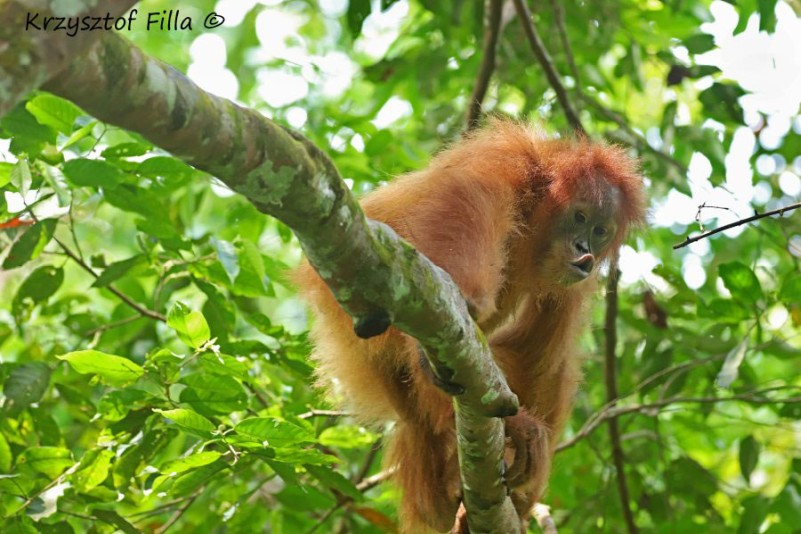
Orangutans when disturbed or try to deter an intruder they smack their lips. Besides, they can through twigs, pieces of bark or violently shake branches to frighten the unwelcome guest.
^ ^^^
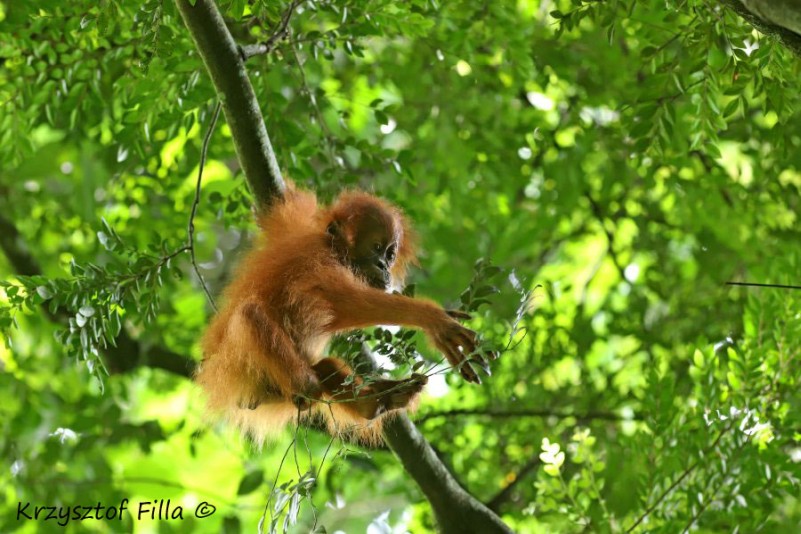
Orangutans are the largest arboreal animals. Afer human, they have the longest period of childhood.
^ ^^^

The Sumatran lar gibbon (Hylobates lar vestitus). Gibbons spend most of their lives in the highest parts of the canopy, often in the so called emerging layer. Practically they do not descent to the bottom of the forest. Anatomically, they are equipped to the arboreal lifestyle and do not do very well on the ground.
^ ^^^
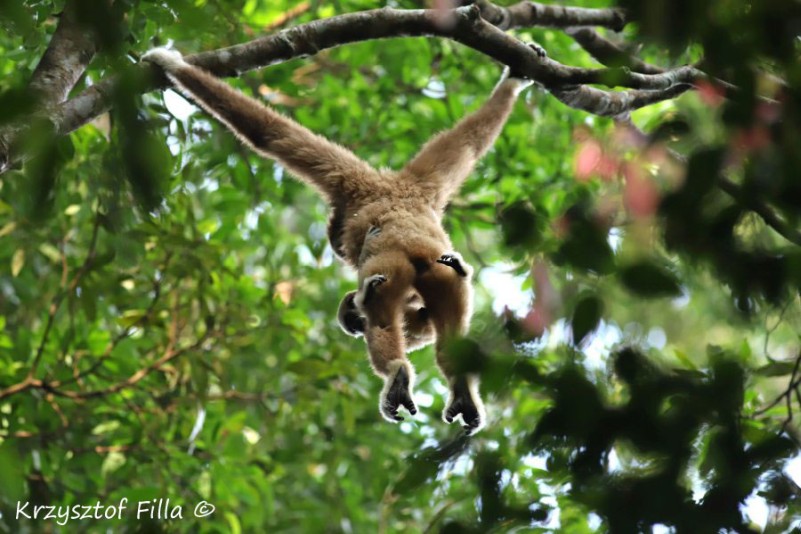
The palms and fingers of gibbons are elongated, naturally bent, giving them a firm grip. In relation to the rest of their body, they have the longest arms among apes. The long span of arms aids them in balancing when walking on tree limbs and jumping from branch to branch leaping distances over 10 m. long and they can move about 50 km/h.
^ ^^^
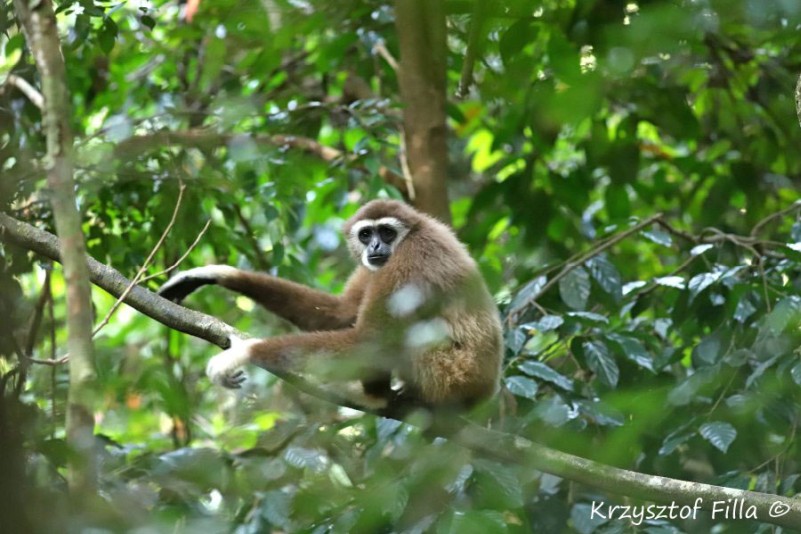
^ ^^^
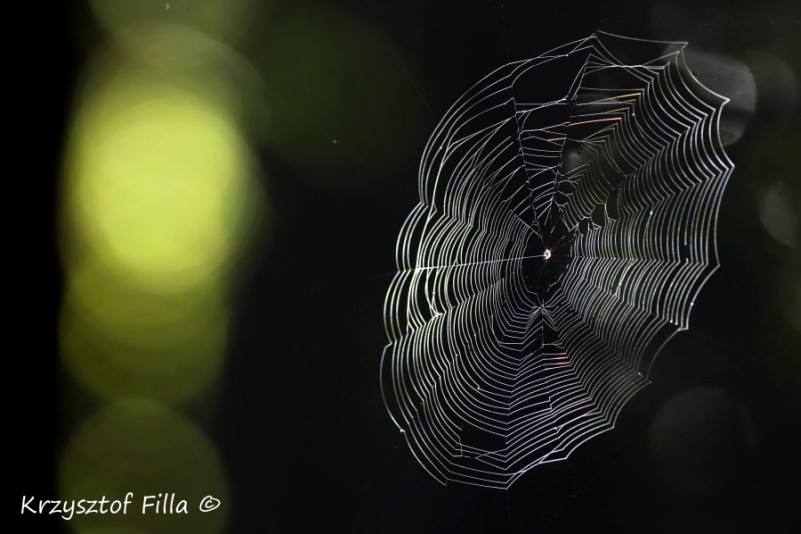
^ ^^^

Long-horned Orb-weaver Spider (Macracantha arcuata).This spider with long horns, as all spiders, is an insect predator. The fly in the lower part of the picture was flying to and fro between his horns as if teasing the spider. The world of nature never cease to amaze.
^ ^^^
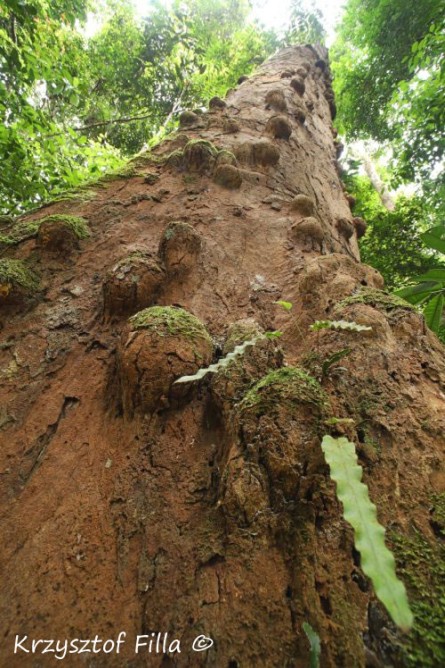
^ ^^^
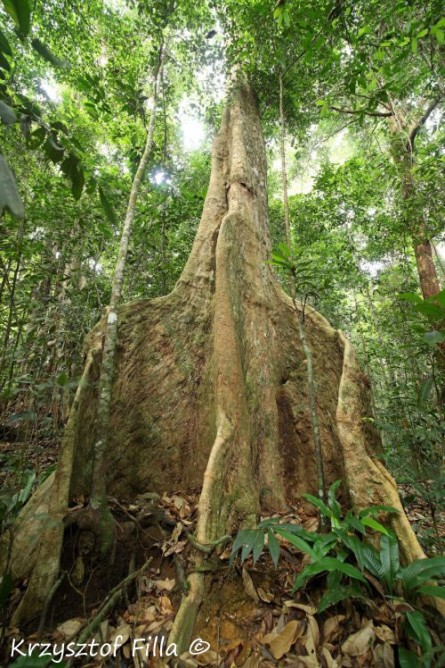
Buttress roots are sort of prop roots. Some tall trees, utilize this system to ensure stability on boggy or soil-less terrain deficient in nutrients. The number of props may vary from a couple (like in this picture) to several developing many forms, shapes and sizes. .
^ ^^^
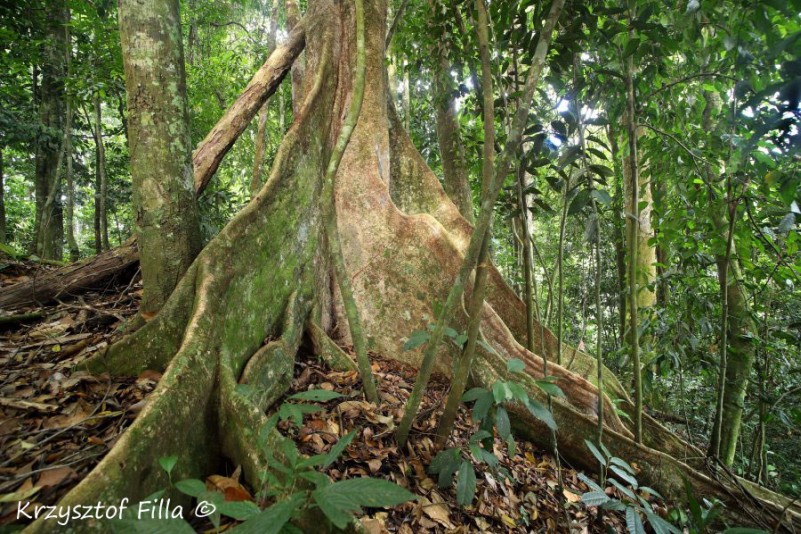
Buttress roots can ascend along a trunk up to 30 m. and spread to the sides the same distance. But most often it is 1-3 m. in height and several horizontally.
^ ^^^
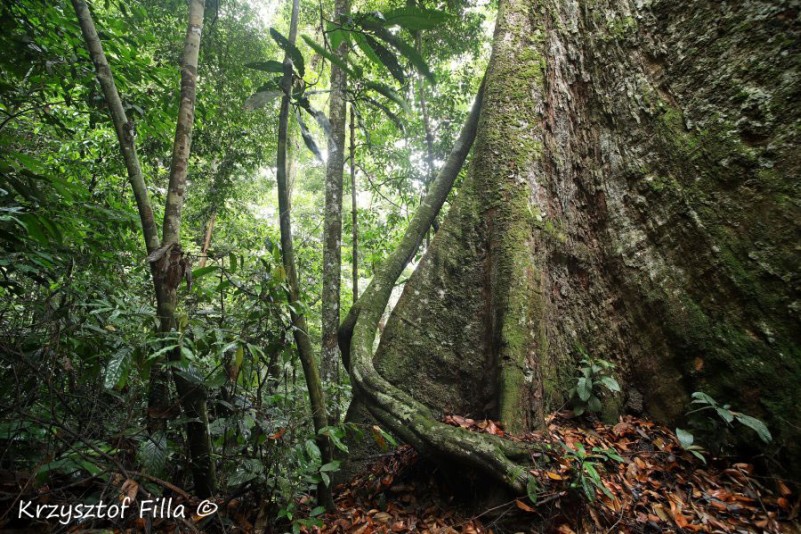
^ ^^^

System of prop roots is usually associated with mangrove vegetation, which grows mainly at inshore areas, swampy and boggy. Rain forests characterize by low quality of humus (soil) or even by its lack. Therefore without sufficient anchoring, trees are are prone to collapse. Therefore, some of them adopted to this by developing additional support in the form of prop roots.
^ ^^^
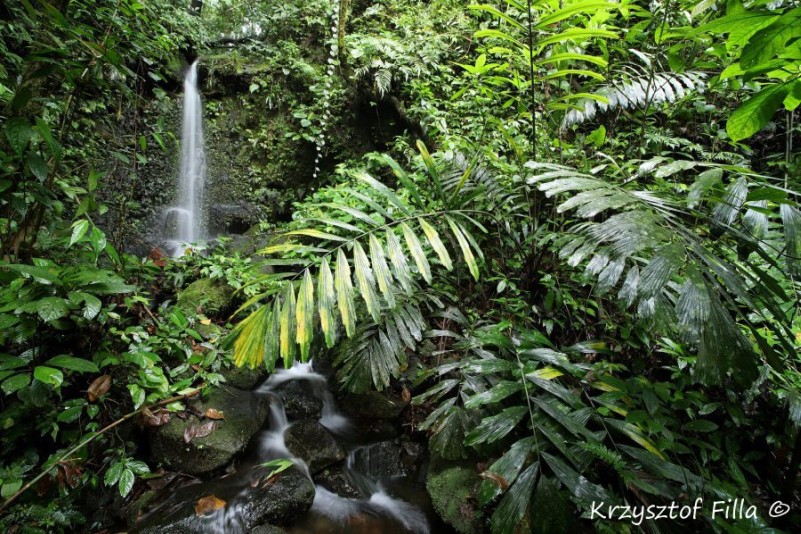
A waterfall.
^ ^^^
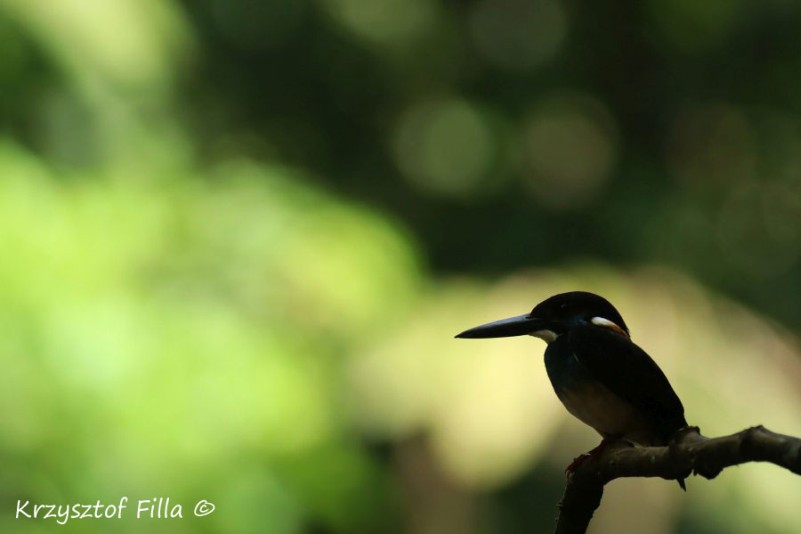
^ ^^^

^ ^^^
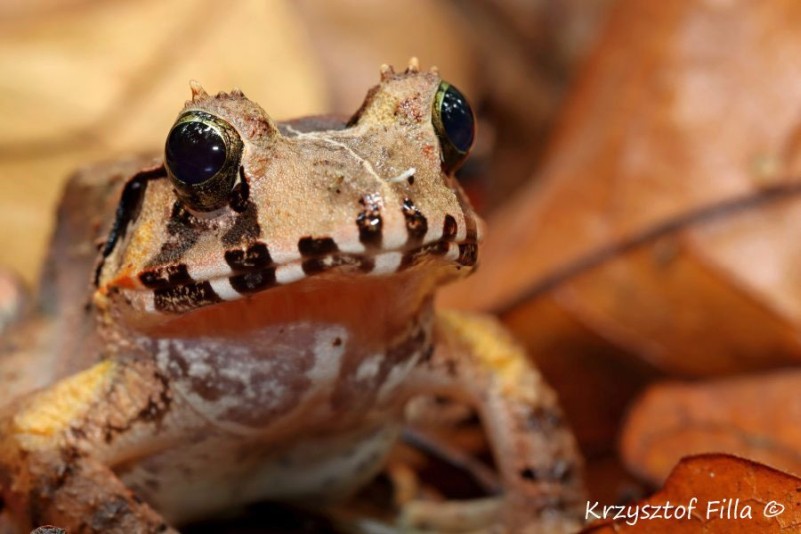
^ ^^^
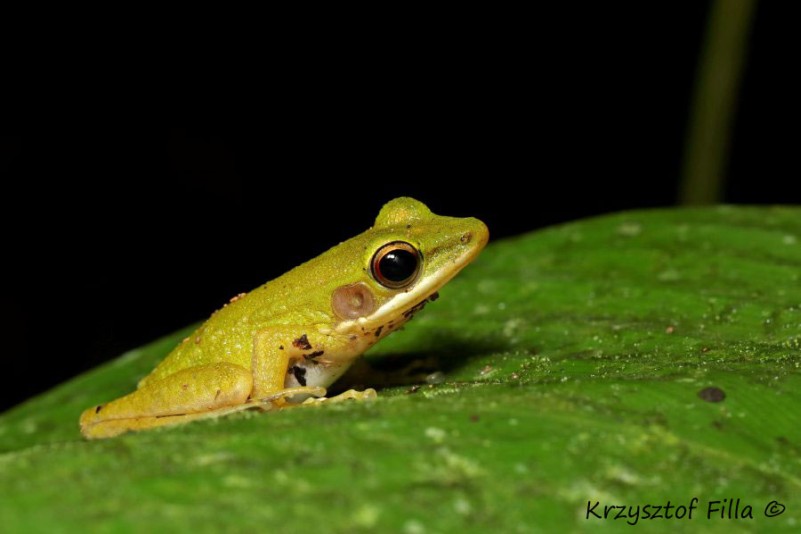
^ ^^^
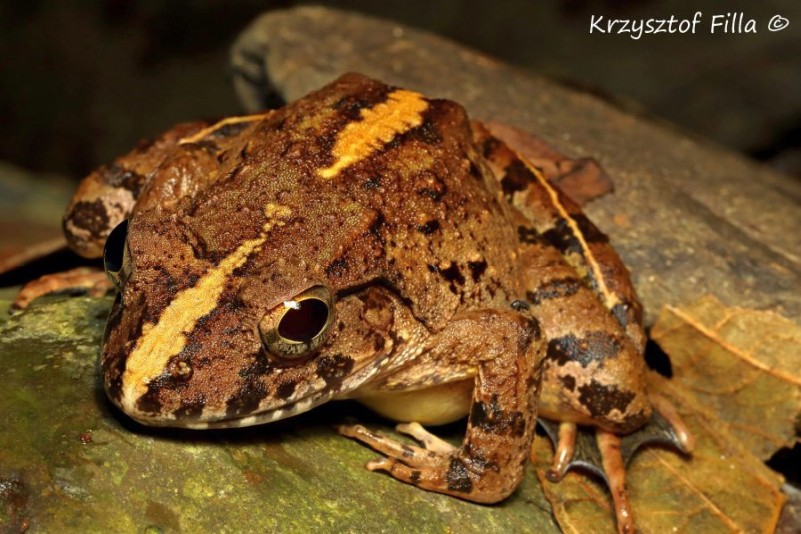
^ ^^^
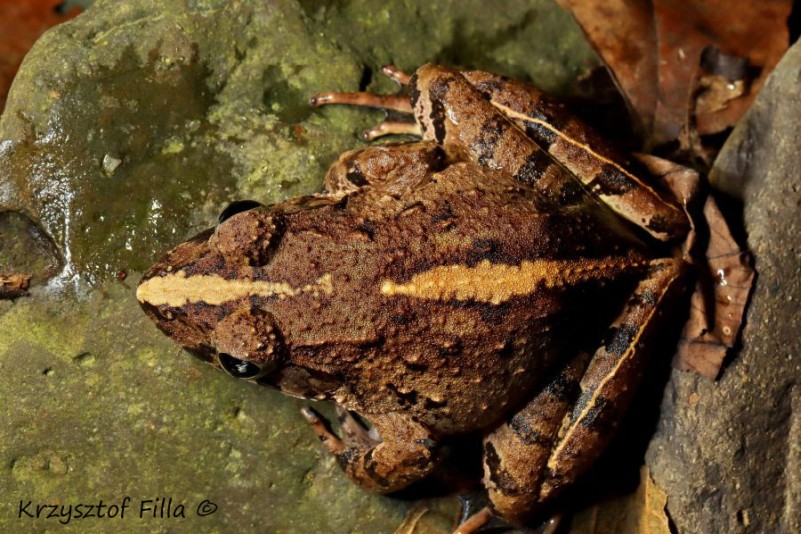
^ ^^^
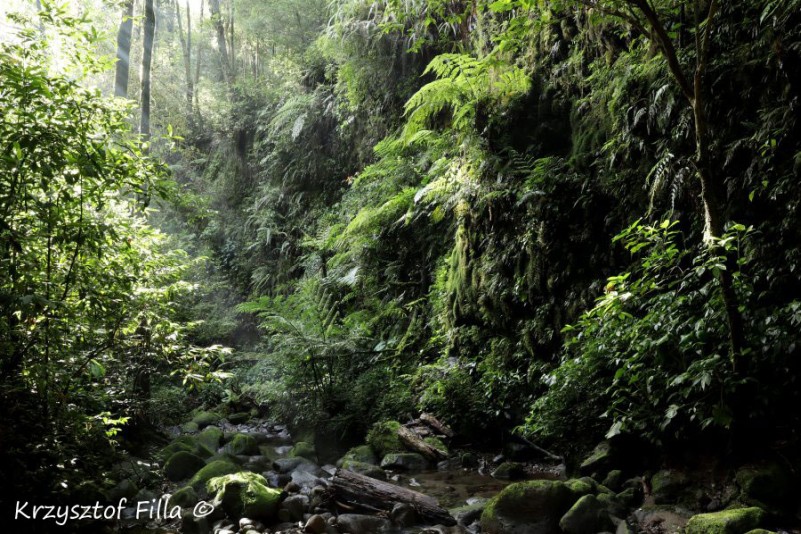
^ ^^^
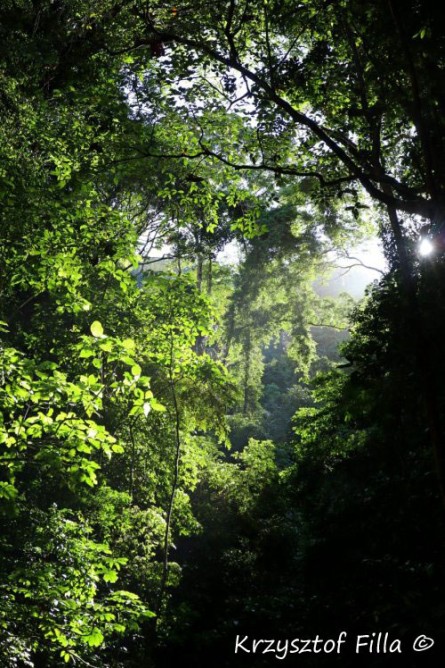
^ ^^^

Pink-headed Reed Snake (Calamaria schlegeli). The length of the snake is 40 cm. It feeds mainly on insect, small snails and amphibians. It is not venomous, however it can be mistaken with another highly venomous reptile the Blue Malayan coral snake (Calliophis bivirgatus).
^ ^^^
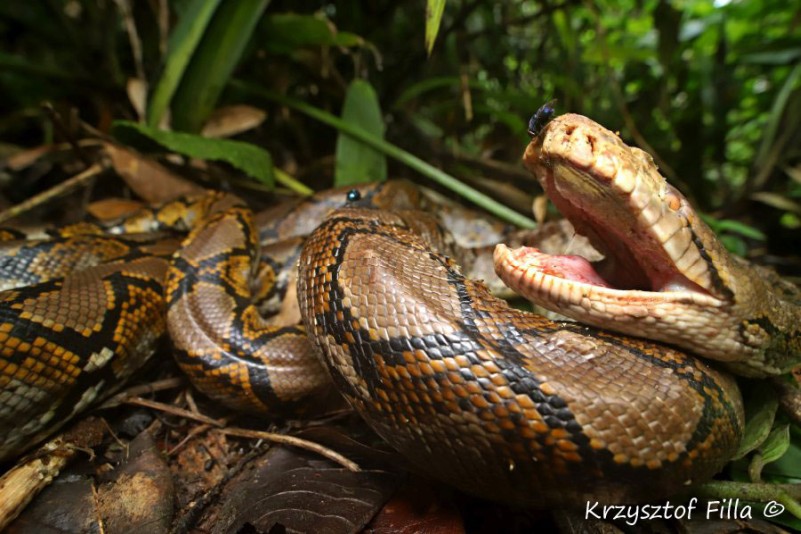
The reticulated python (Python reticulatus). Snakes in popular opinion in many places around the world have unjustified bad reputation. Folk based on old myths and beliefs, pinned them down as the evil ones. And pythons, especially in modern media have become sensational as the mega-giant snakes that gobble people around world, especially in tropics. They really deserve our respect for what they really are.
^ ^^^

Most reticulated pythons grow to about 6 m. when mature. They live in S.E. Asia and all the way to India. Their food is mainly small mammals, eggs, birds and amphibians.
^ ^^^
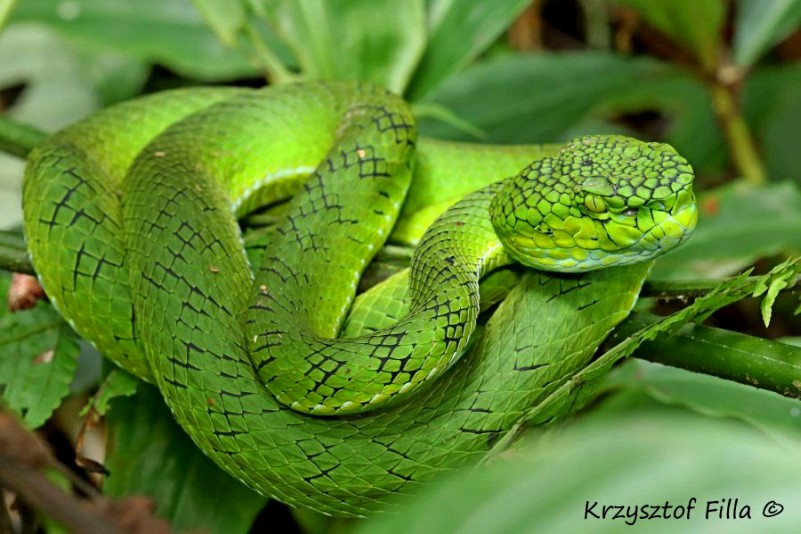
Gunalen's pit viper (Trimeresurus gunaleni). The viper is coiled on a small bush at a knee level awaiting its pray. They feed mainly on Amphibians, snails or eggs. In the dark undergrowth it is virtually inconspicuous. It does not attack people as such but when disturbed or pushed by pedestrian it can strike. All vipers are venomous. Their venom contains hemotoxin that destroys blood vessels and cells, causing extreme pain and swelling in the bite area with permanently damaged tissue. Among many symptoms like headache, nausea or disorientation, there maybe occur kidney failure that can lead to death.
^ ^^^

Gunalen's pit viper (Trimeresurus gunaleni). The snake was told apart from similar snake called Sumatran pit viper (Trimeresurus sumatranus) that dwells in forests up to 900 m. above see level, whereas this picture has been taken in mountains over 1700 m. It is endemic to the North Sumatra. All vipers are venomous. We can recognize them by narrow vertical pupils, their head is slightly triangular and often their tail has vivid distinctive colours.
^ ^^^
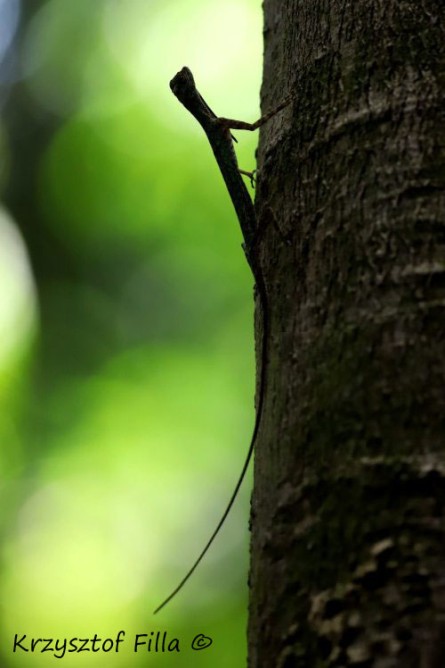
The Common Gliding Lizard (Draco sumatranus).
^ ^^^
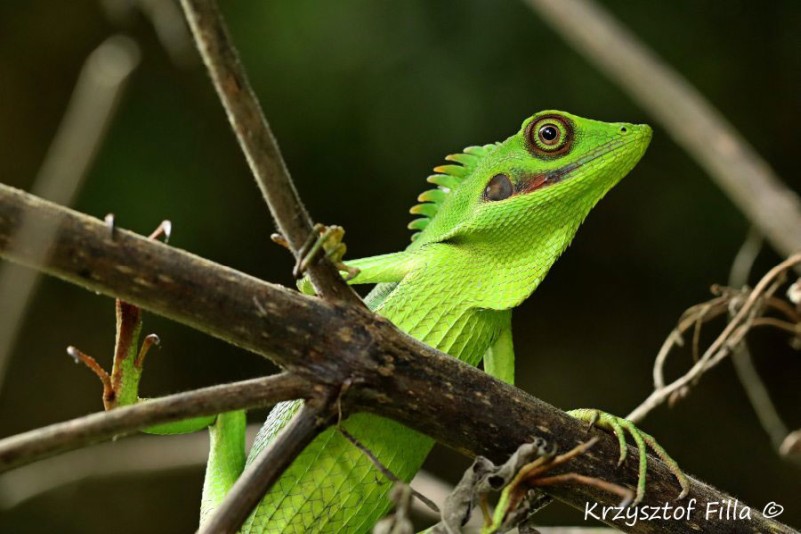
The green crested lizard (Bronchocela cristatella). Males have small crest on their backs. The length of their body is 13 cm. but together with the tail it may measure 57 cm. The long tail constitutes 75% of their total length.
^ ^^^
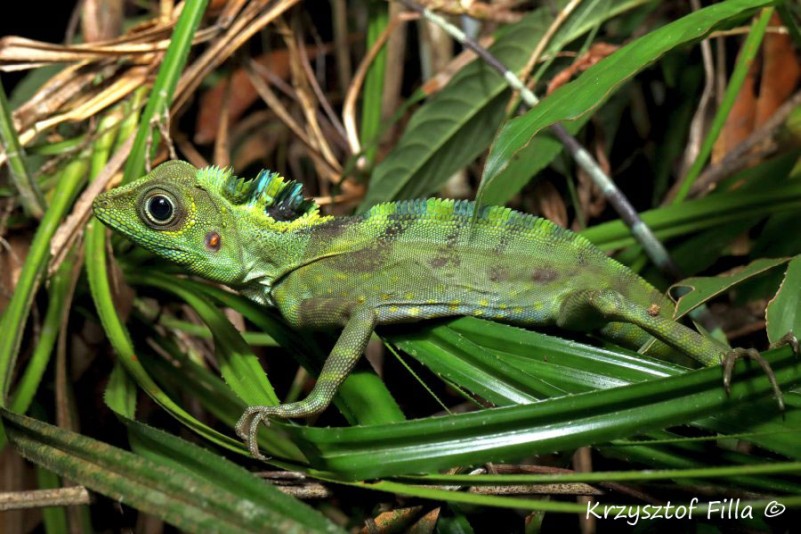
(Gonocephalus)
^ ^^^
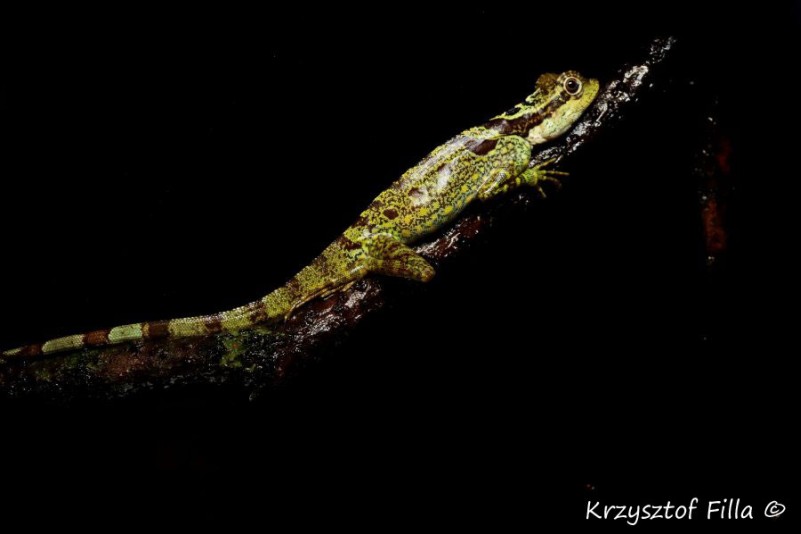
^ ^^^
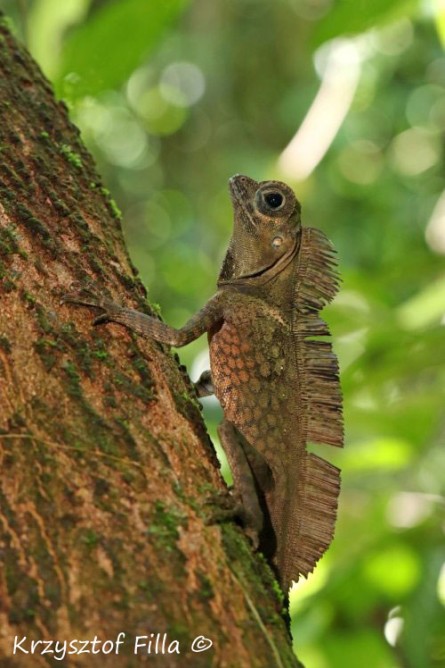
^ ^^^
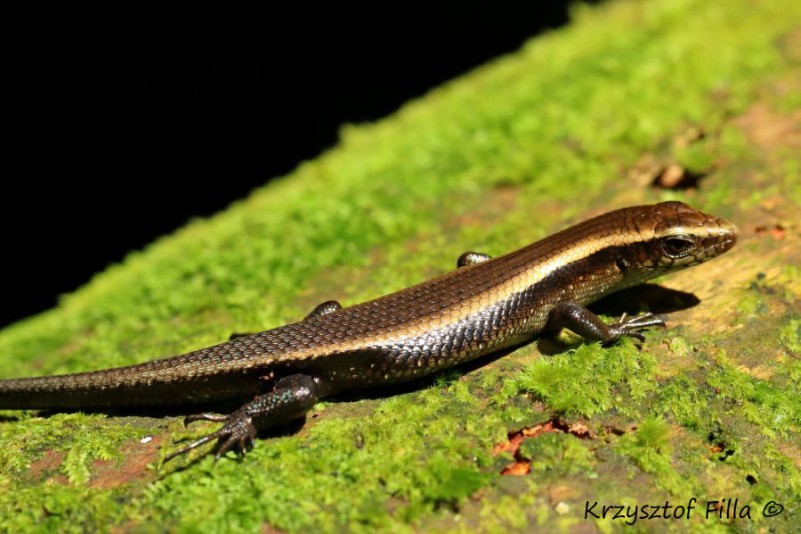
The common sun skink (Eutropis multifasciata).
^ ^^^
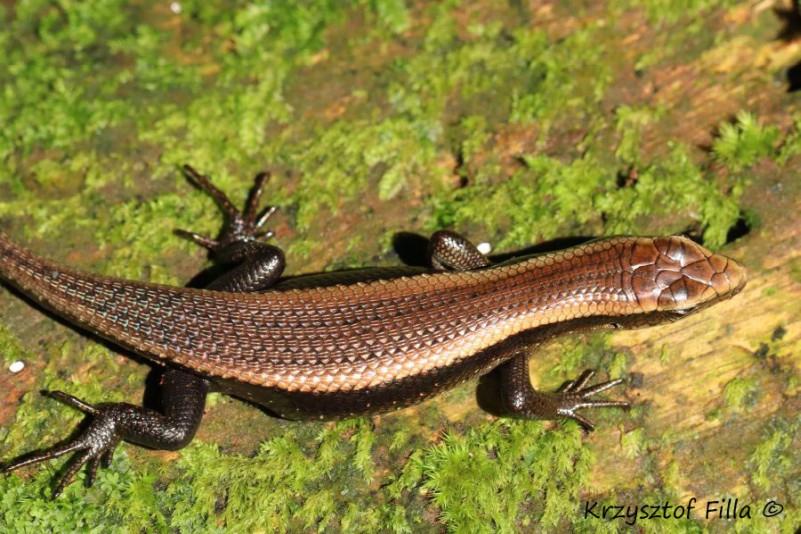
The common sun skink (Eutropis multifasciata).
^ ^^^
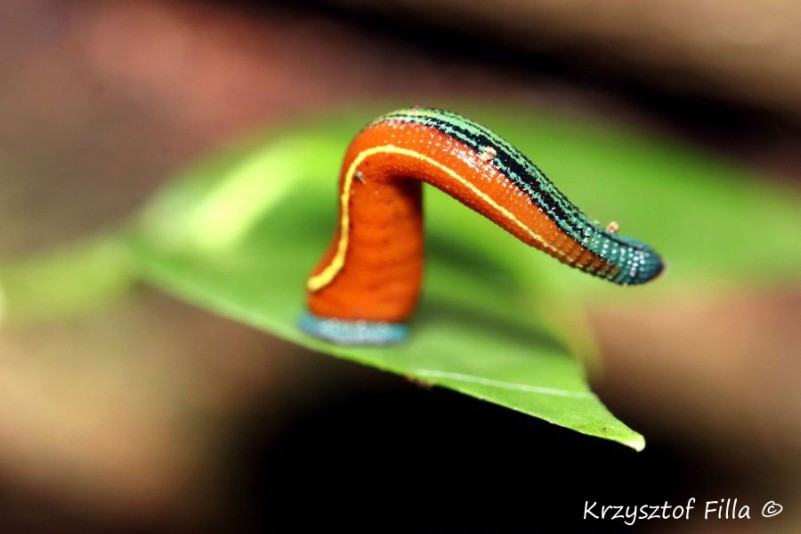
A leech in its neutral position has a length and thickness of a match. After some time of being stacked to the skin of a mammal, it fills with blood and thickens to the size of a finger. Usually their bite is undetectable and they suck the blood of its unaware host. After feeding, they fall off and their active anticoagulant (hirudin) in their saliva prevents the blood to clot for another 20 min. causing prolonged bleeding.
^ ^^^
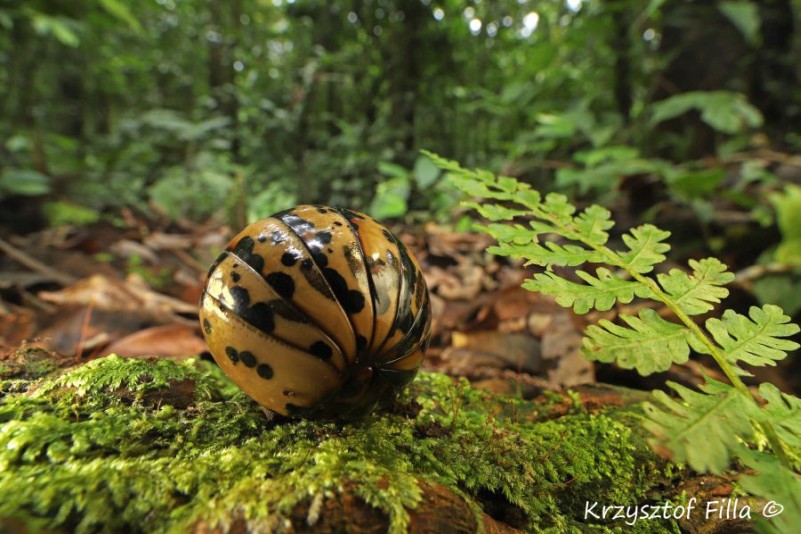
Pill millipede rolls into a ball when disturbed or in danger. Its name derives partly from the shape when it is rolled up. Pill millipede feeds mainly on moss, bark and decaying vegetation.
^ ^^^

^ ^^^
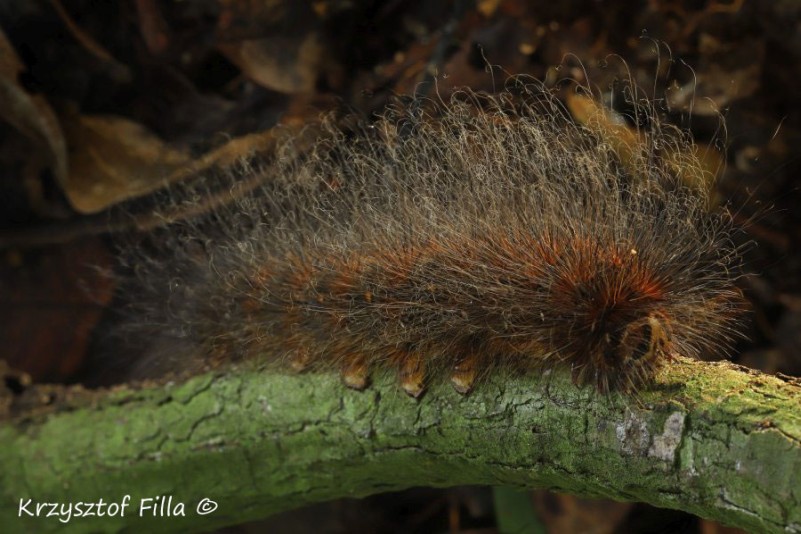
^ ^^^

^ ^^^
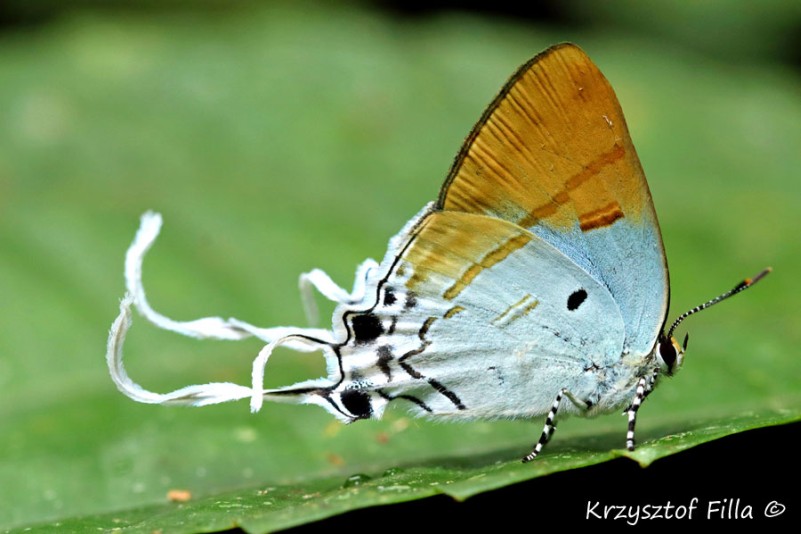
(Drupadia ravindra).
^ ^^^
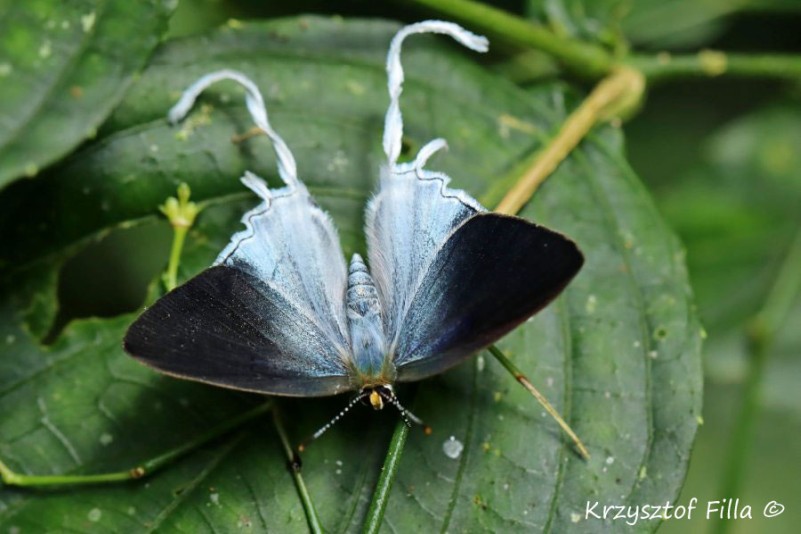
^ ^^^

Male the common archduke (Lexias pardalis).
^ ^^^

The common cruiser (Vindula erota).
^ ^^^
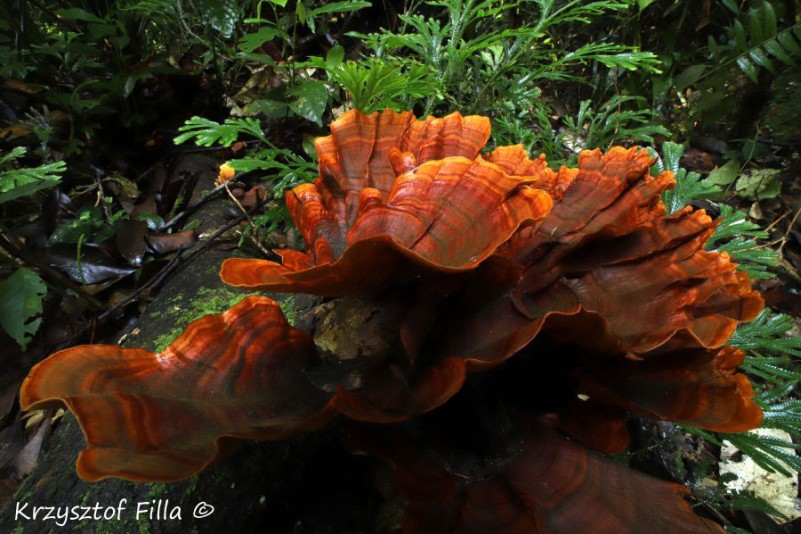
^ ^^^
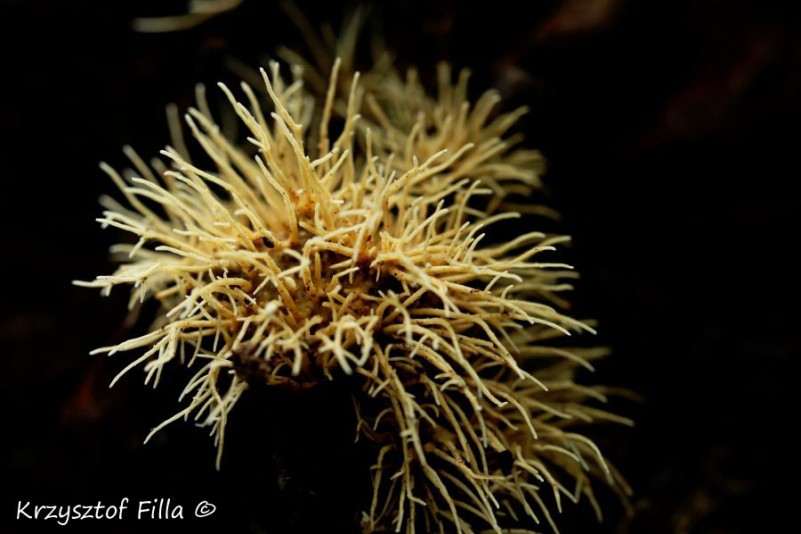
^ ^^^
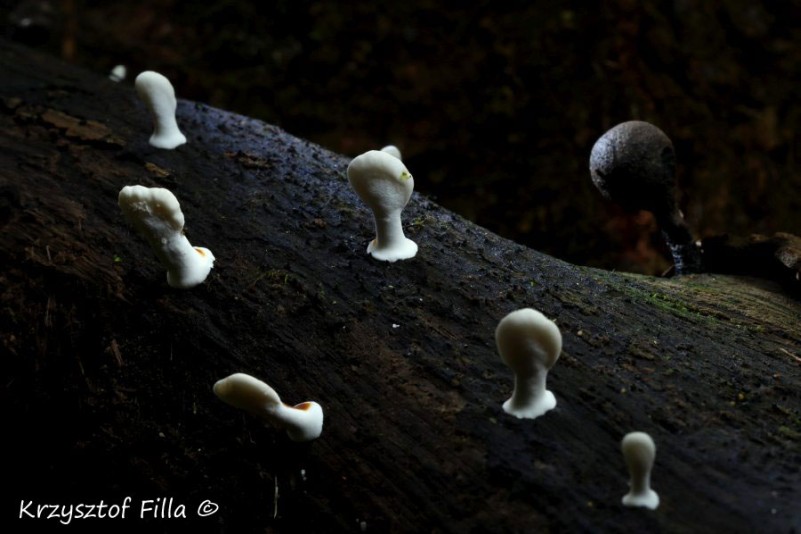
^ ^^^

^ ^^^

^ ^^^
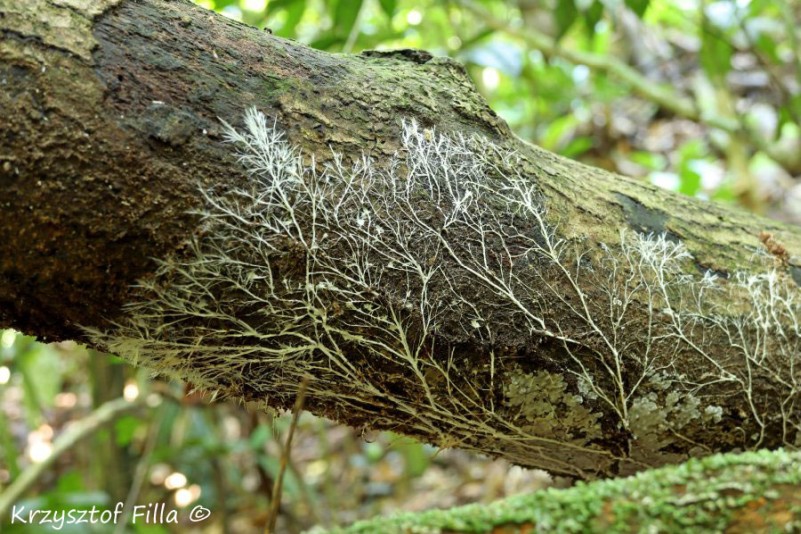
^ ^^^
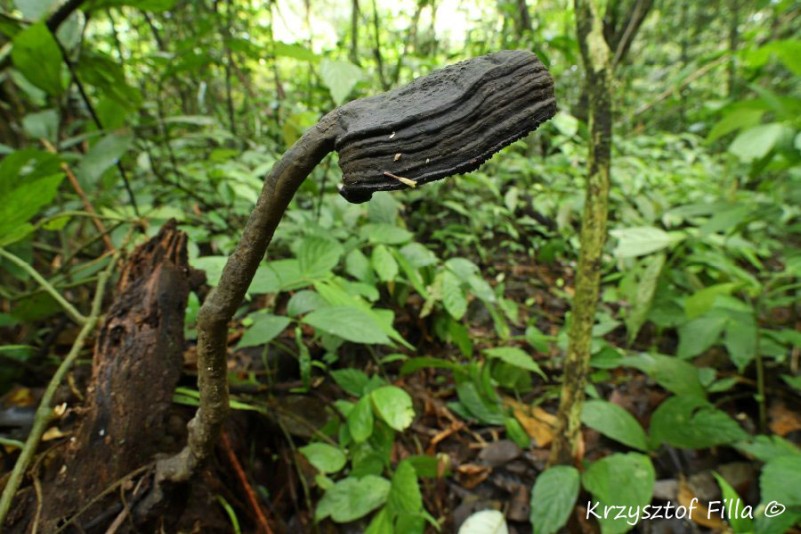
^ ^^^
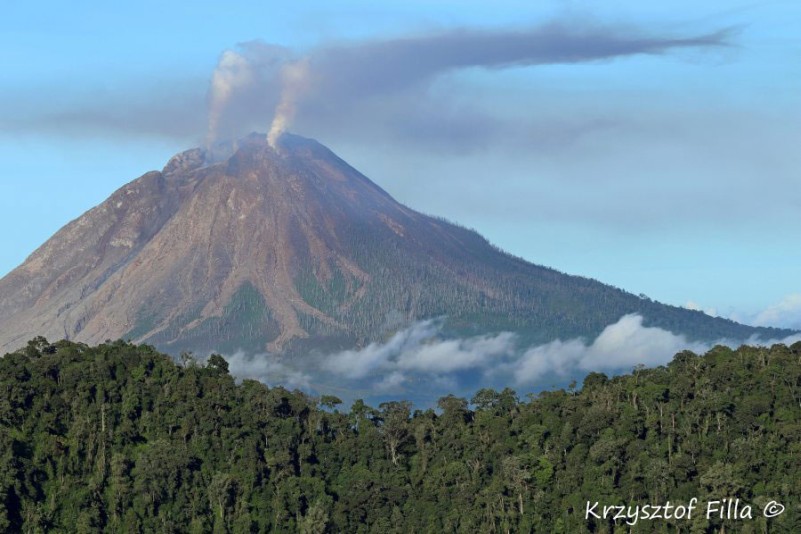
The volcano Sinabung 2460 m. a.s.l. The mount was dormant for 1200 years. However, it has waked up erupting in 2010 and ever since it releases volcanic gases and ashes. Next eruptions occurred in 2013, 2018 and august 2020 exactly the day when I was leaving its vicinity in Sumatra.
^ ^^^
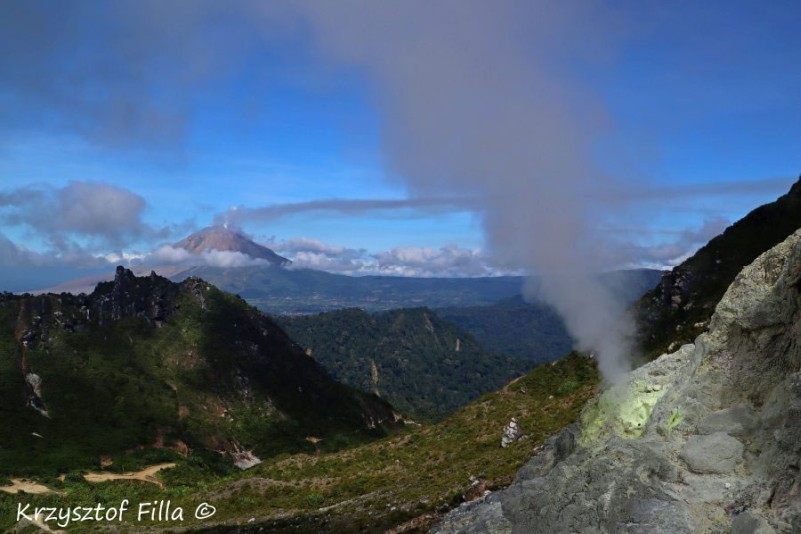
On the right side a fumarole. It is a thermal vent, spewing steam and gases. It is on the top slope of the volcano Sibayak. In a distance of dozen or so kilometer the protruding volcano Sinabung.
^ ^^^
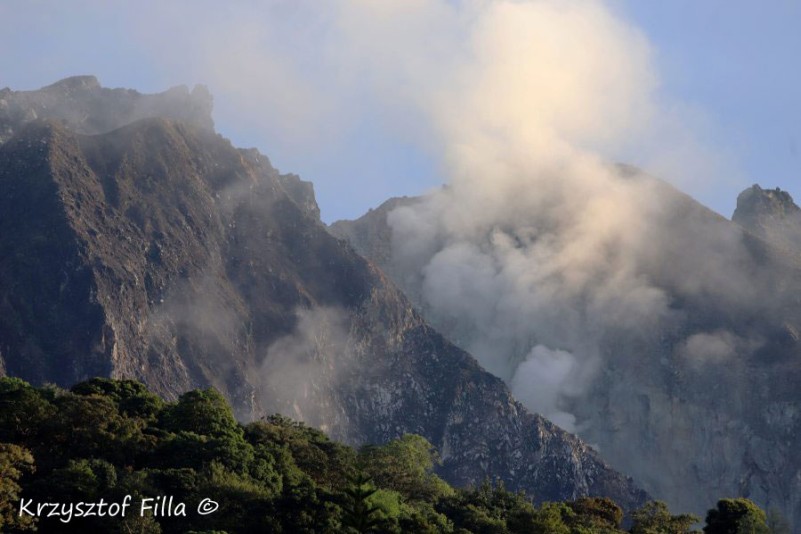
A craggy slope of the volcano Sibayak. Thick cloud ascends from the biggest fumorole. In the area there many hot springs and there is a geothermal electric plant.
^ ^^^
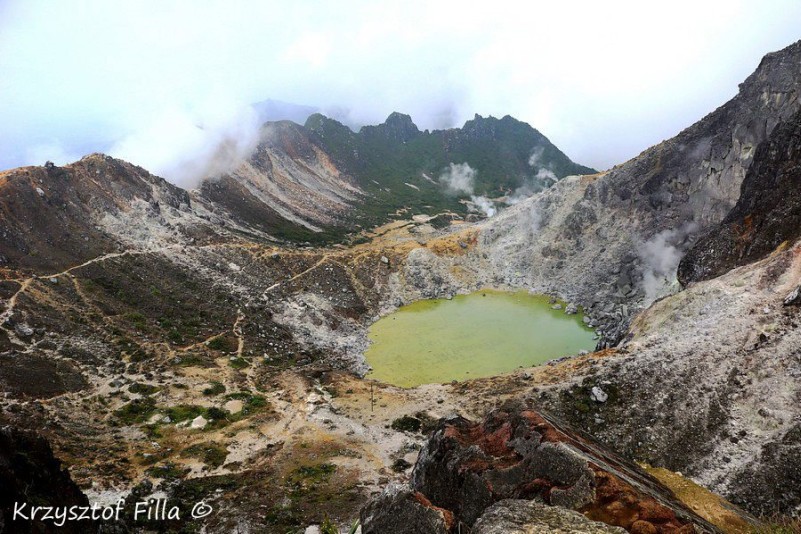
The main crater of the dormant volcano Sibayak has 900 m. in diameter. Inside the main crater there is a smaller one that is filled with water. The last eruption took place in the year 1881.
^ ^^^
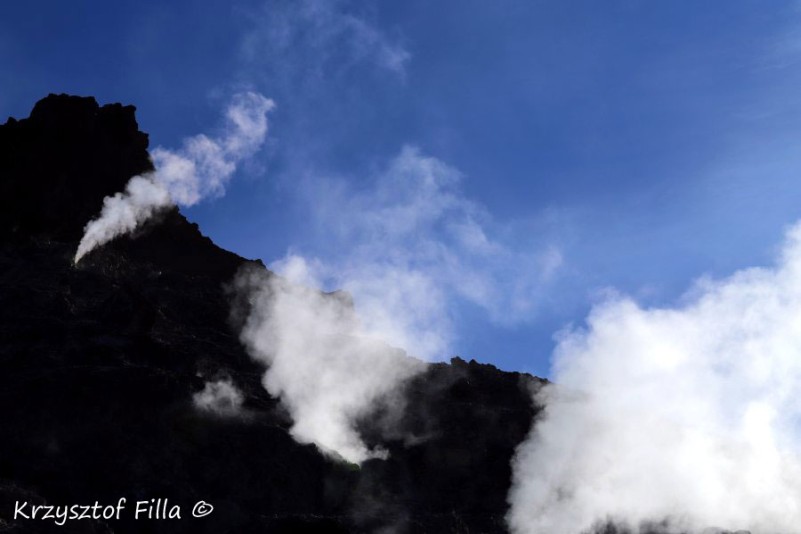
Cracks in the rocks create geothermal vents. They dynamically change places. Some may increase on strength and other completely vanish on the time scale of a few months.
^ ^^^

A sulfur fumorole, precisely called solfatara is a volcanic vent jetting a moderate temperature gases (100-300'C) where at its moth there is a residue of sulfur. Local sulfur collectors put stones over the opening which gather the mineral on its surface.
^ ^^^
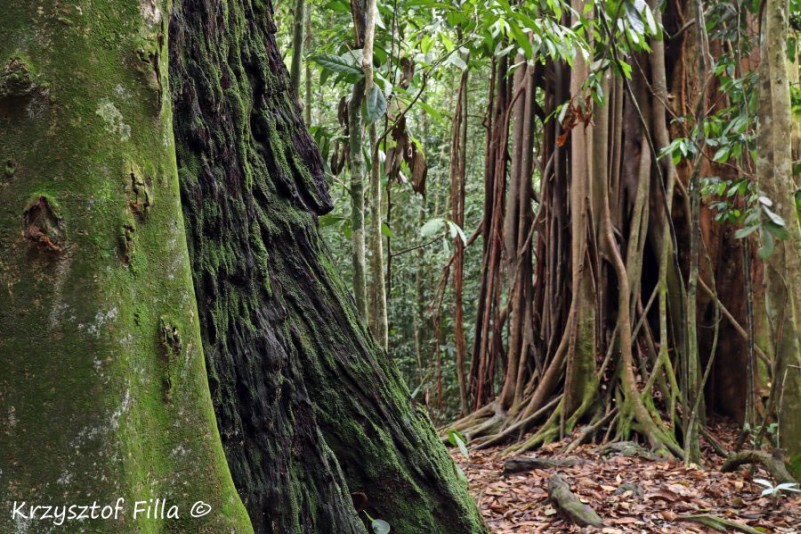
In this picture 3 different trunks.
^ ^^^
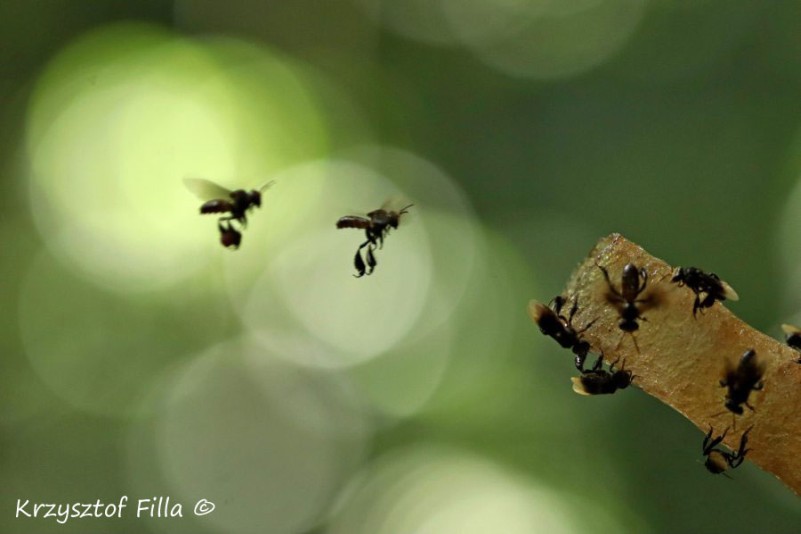
Wild sting less bees occur chiefly in the torrid zone. They are important pollinators collecting nectar and pollen. They mainly build their nests in tree trunks or underground using natural openings and canals. They wall off the entrance extending just a narrow pipe in a shape of a trumpet that serves as an entrance for the bees.
^ ^^^
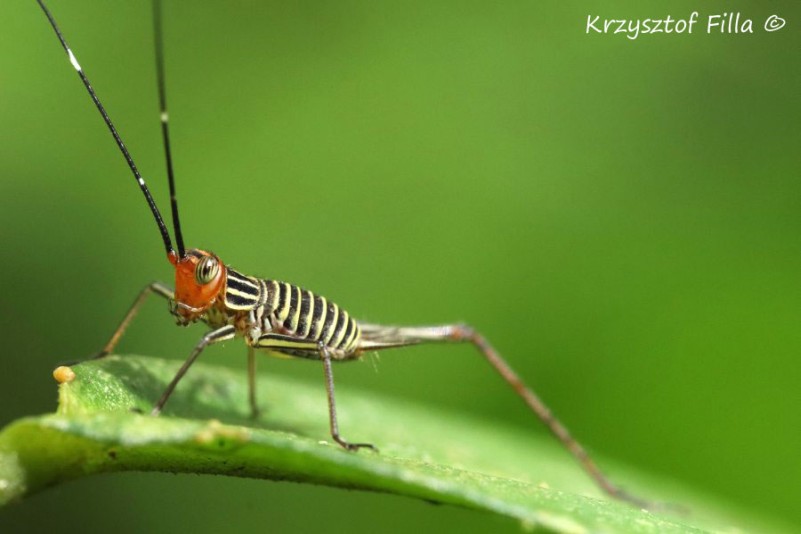
Black and yellow striped cricket.
^ ^^^
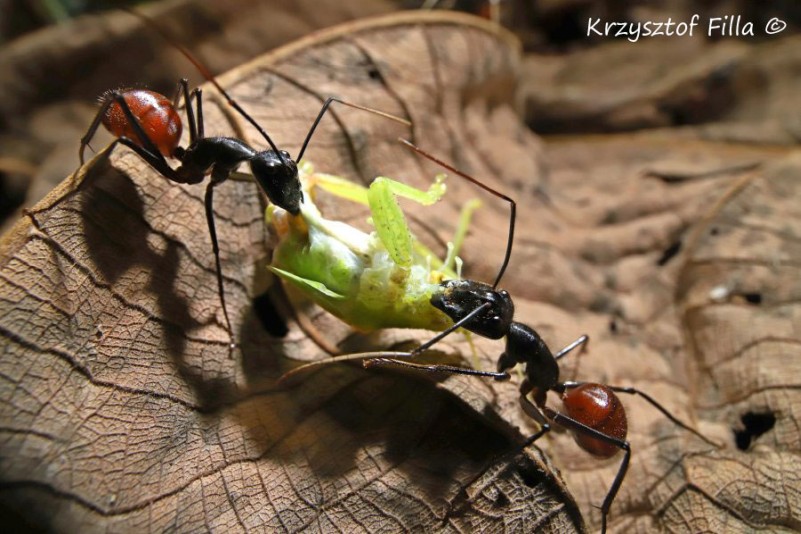
The giant forest ant (Dinomyrmex gigas). It is one of the biggest ants. The size of a worker is 28 mm. in length. They are nocturnal reappear every night in search of food. They feed mainly on honeydew but insects are on the menu too, like the green cricket.
^ ^^^
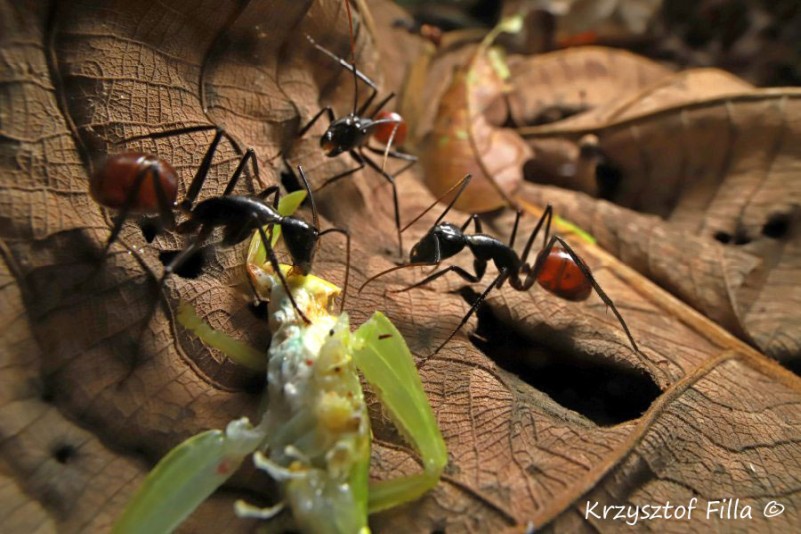
The giant forest ant (Dinomyrmex gigas). As a colony they are active during night, when in columns march on the crisscrossed forest motorways marked by themselves. However, there are a few lonely ants reapearing during daylights that patrol the area. Only once, I managed to observe a couple of dozens of them in one spot dismembering and transporting the cricket to the nest.
^ ^^^
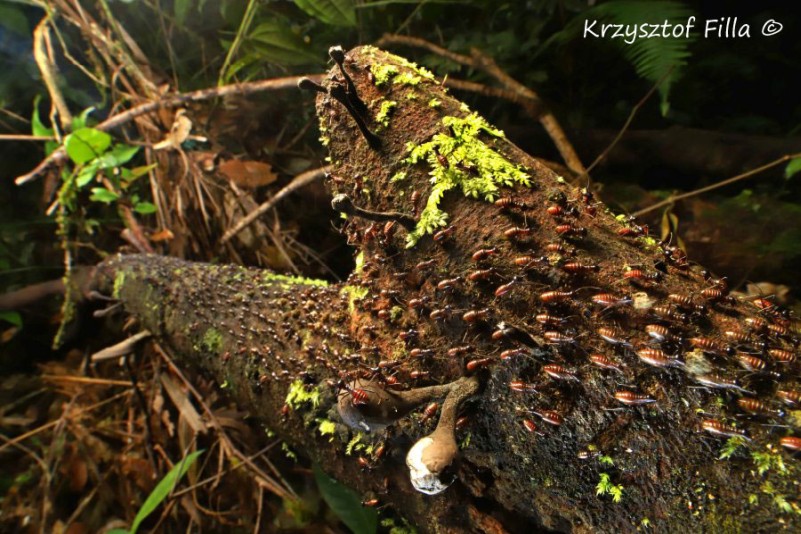
Termites create long continuous streams of workers running for many dozens of meters. They transport decaying wood for long distances. Their ways are lined on both sides with solders termites whose role is to protect the workers and ensure a smooth transportation of food or building material. Having in mind their size and hard work they have very impressive longevity. Workers can live about 1 to 4 years and some queens have a record of 50 years.
^ ^^^
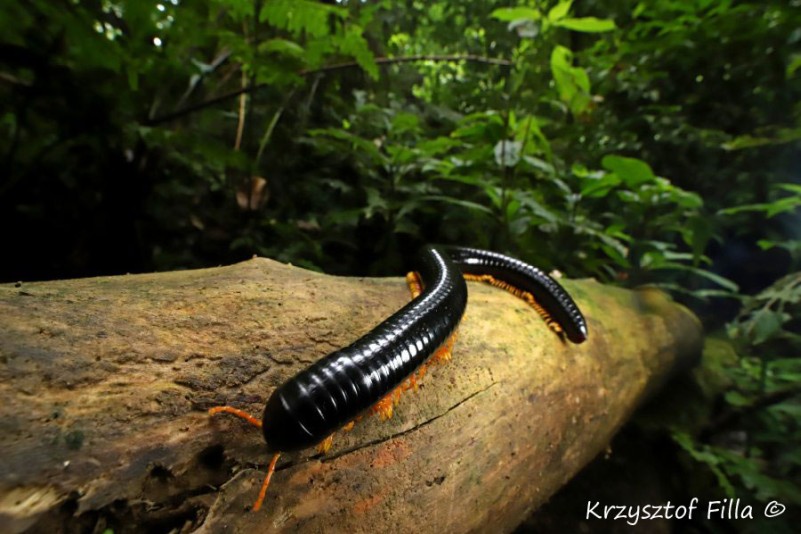
These millipedes chew and fragment decomposing wood. Their length, like the specimen in the picture, can reach 30 cm. Except the wood, their vegetarian diet consists of leaves, bark, algae or mushrooms.
^ ^^^
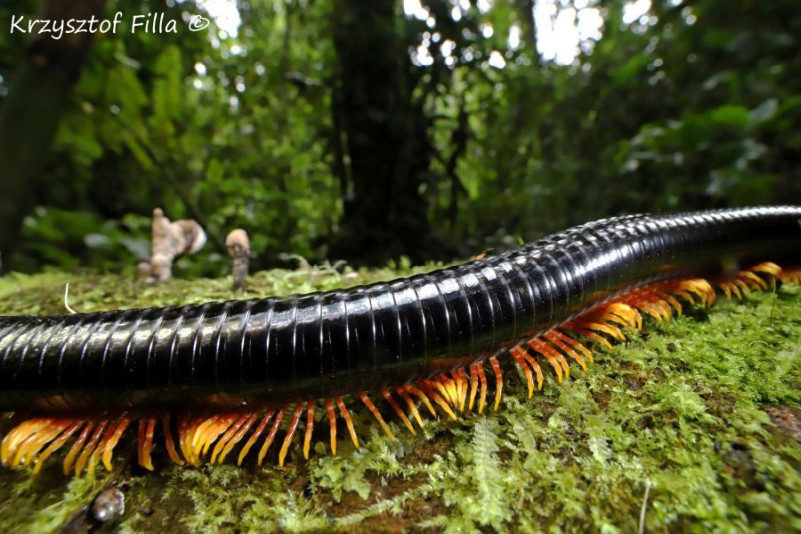
Millipedes are often mistaken with centipedes, which are predators and possess glands with venom. They differ by appearance from millipedes but to puts them apart, centipedes have one pair of legs on segment whereas the other have two pairs of legs per segment.
^ ^^^
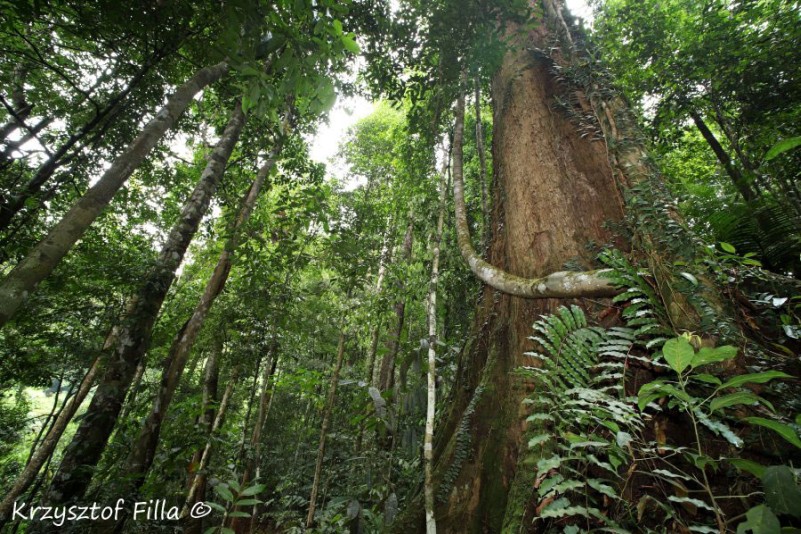
^ ^^^
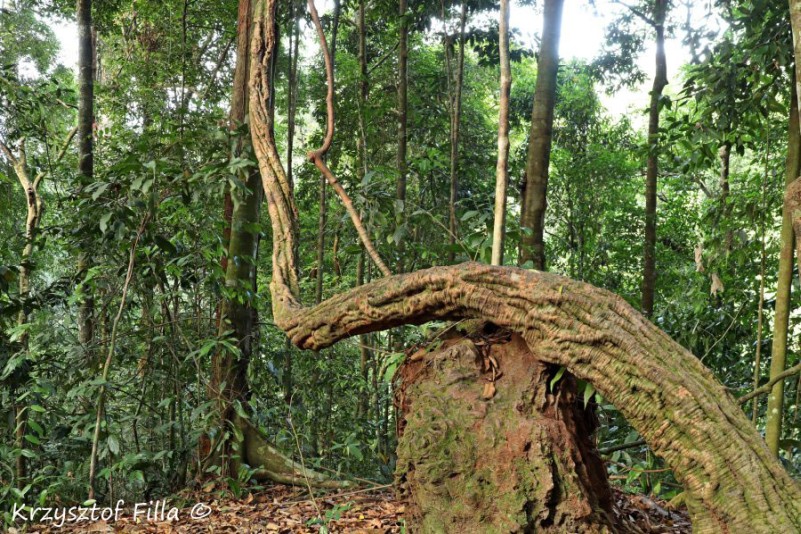
The twisting and curling lianas are part of many sceneries in rain forests.
Lianas are climbing, or I should say creeping woody vines. They belong to the group of plants called epiphytes that grow on other plants. Some of them, may be as long as 1000 m. and thick as my torso. Lianas can secure some trees against falling but as well may pull when a heavier tree is falling. Lianas constitute a great natural walkways and bridges between the trees for many arboreal animals.
^ ^^^
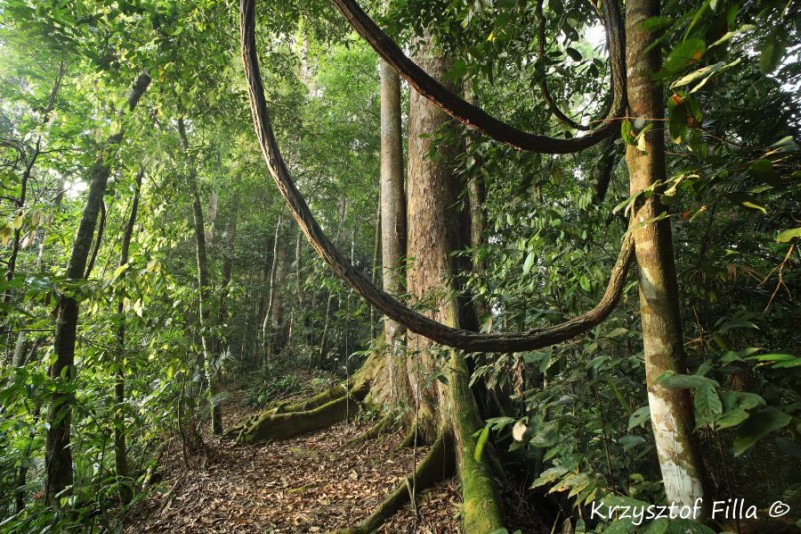
^ ^^^
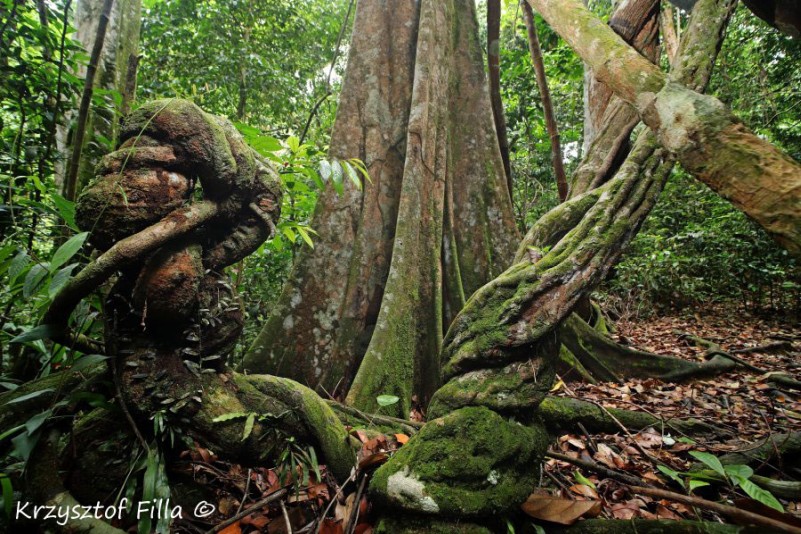
^ ^^^

^ ^^^
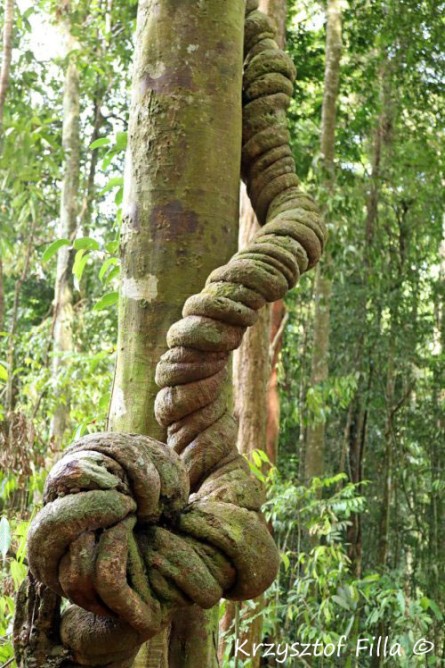
^ ^^^
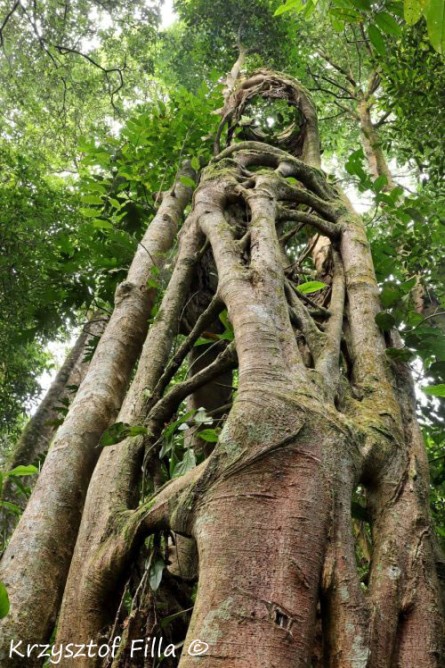
A strangler fig is a common plant of many tropical forests. It has a very interesting growth habit. It begins its life as a seed, mostly in the canopy, deposited there by some bird. The seed germinates shooting down to the ground a long root. Once it establishes connection with the ground, it gets its nutrients from the soil. Then the tree starts the next phase and shoots more roots around its host clenching to the trunk. It develops branches taking over the space of its host that slowly languishes the years after. Once it is dead and gone it leaves empty hollow inside the strangler.
^ ^^^

Another form of ficus.
^ ^^^
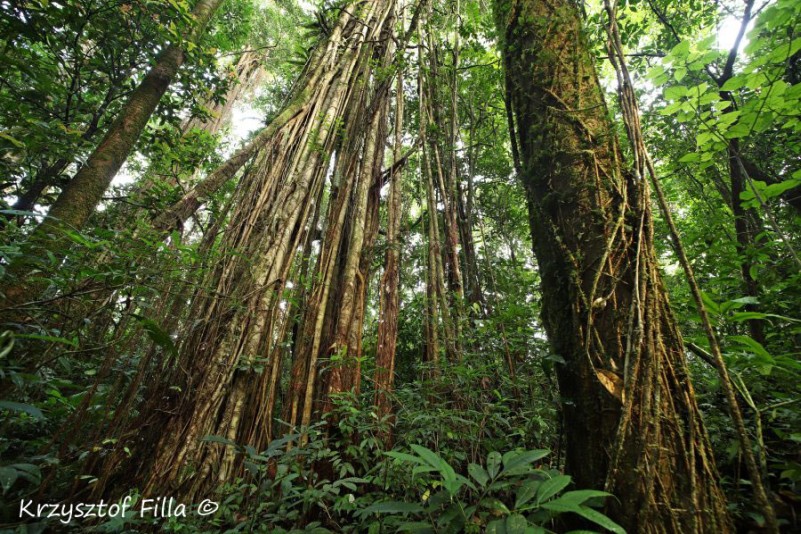
Some species of ficus can grow as high as 60 m.
^ ^^^
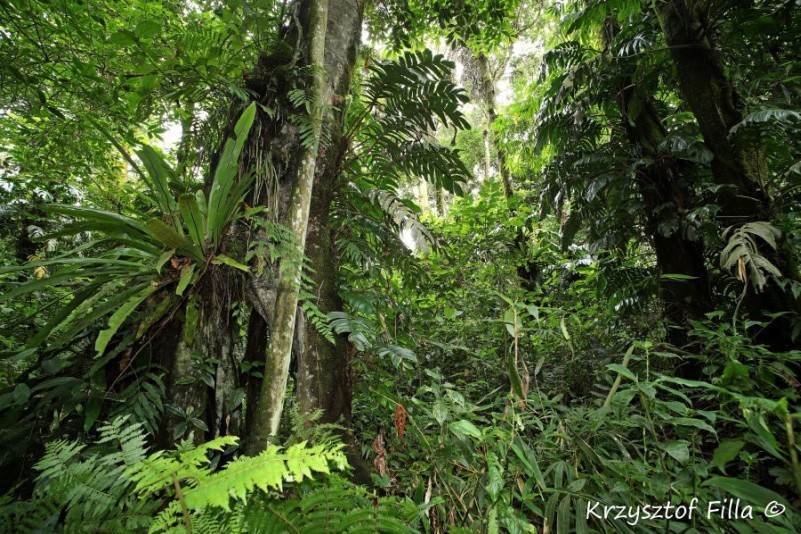
Many trees may be overgrown by epiphytes from its base to the canopy. Most often these are vines or ferns like this tropical bird's-nest fern (Asplenium nidus) on the left side of the picture and the two next photographs.
^ ^^^

^ ^^^
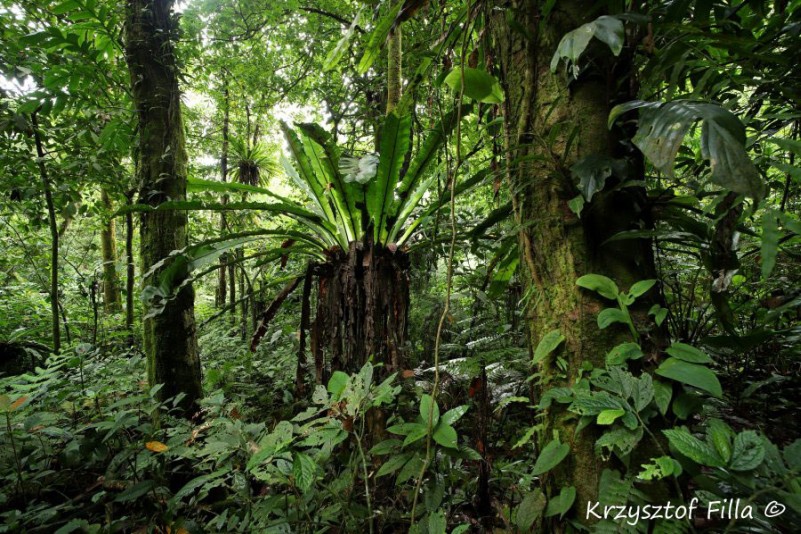
^ ^^^
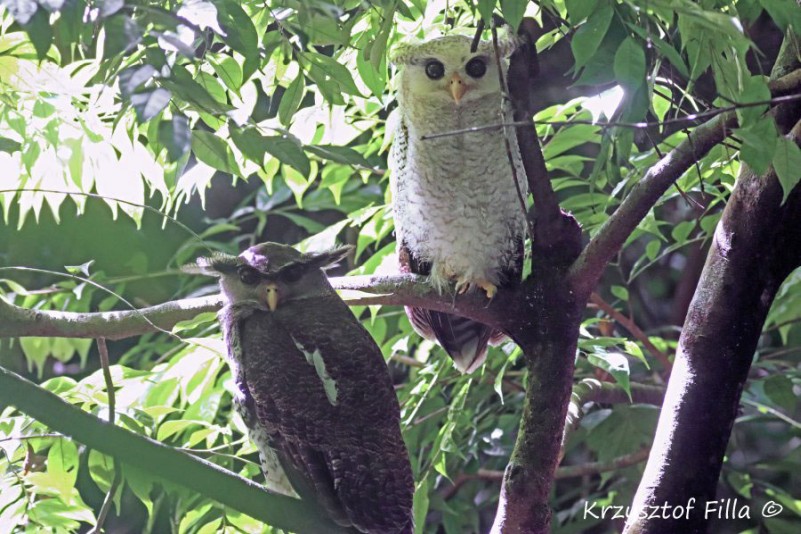
The barred eagle-owl (Bubo sumatranus).
^ ^^^
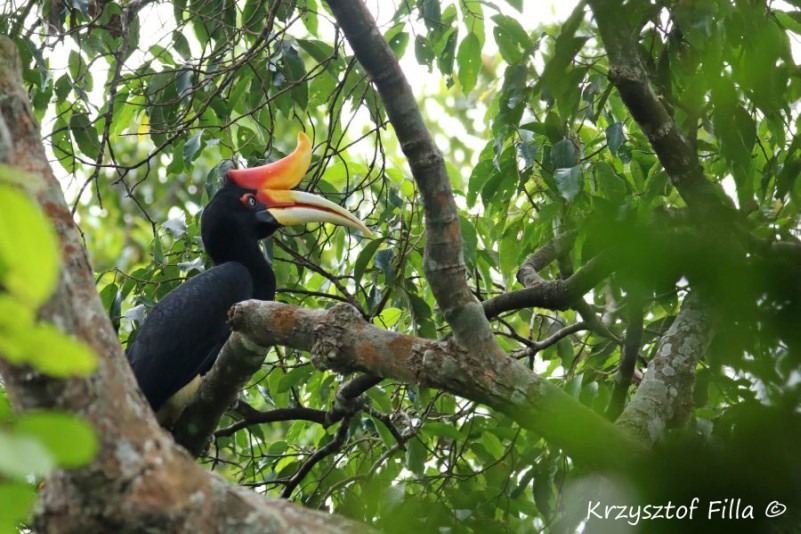
The rhinoceros hornbill (Buceros rhinoceros).
^ ^^^
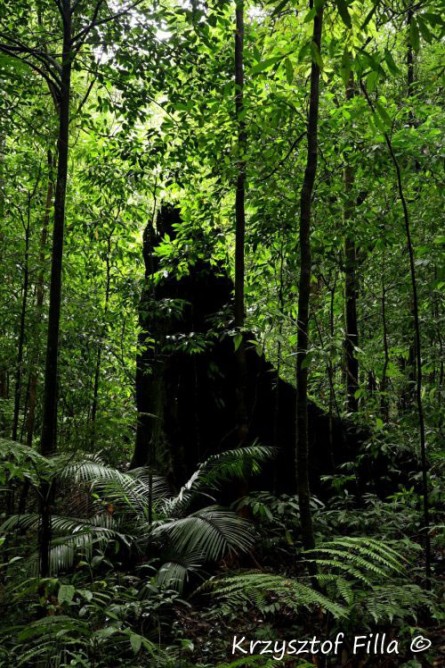
^ ^^^
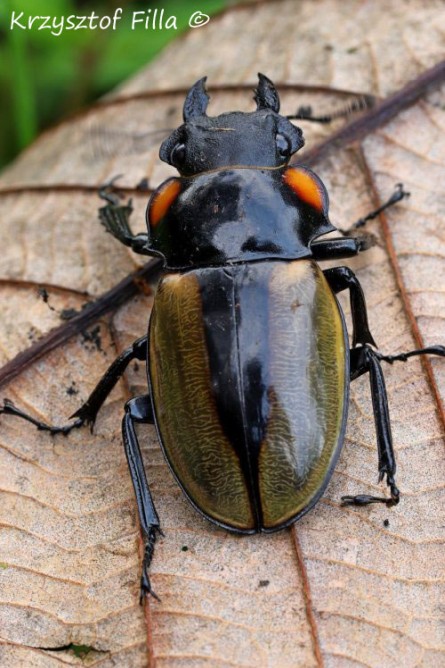
A stag beetle.
^ ^^^

In the dark undergrowth of forest the amount of light that penetrates to the ground is about 2-3% of this what is over the top of the canopy. Many plants living or starting life on the ground developed very sensitive green receptors (chlorophyll) to catch all the dimmed light (dispersed photons). The just opening leaves have very sensitive structure and are very vulnerable to damaging, in case if a direct beam of sunlight breaks through and hits the leaves. For this reason, some young opening leaves protect themselves using chemical compound, a filter called anthocyanin that gives the reddish tint. Another tactic is the vertical position of the bad and leaves that limits the effect of direct noon light.
^ ^^^
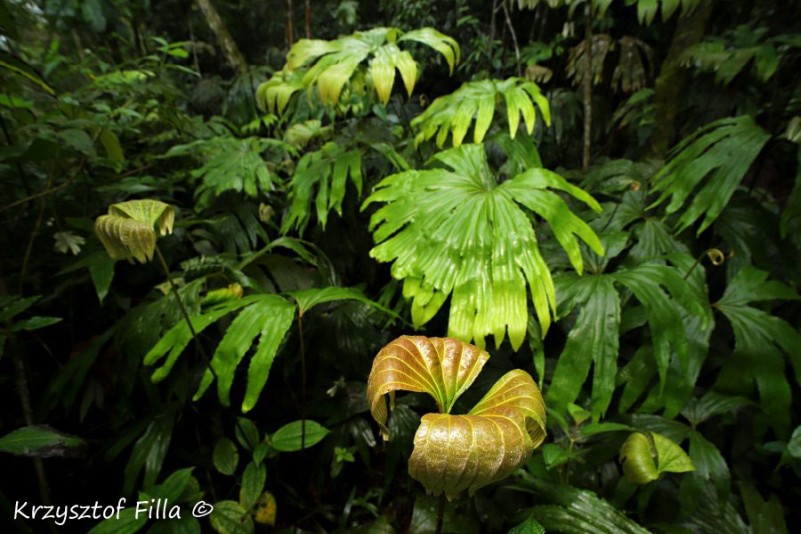
^ ^^^
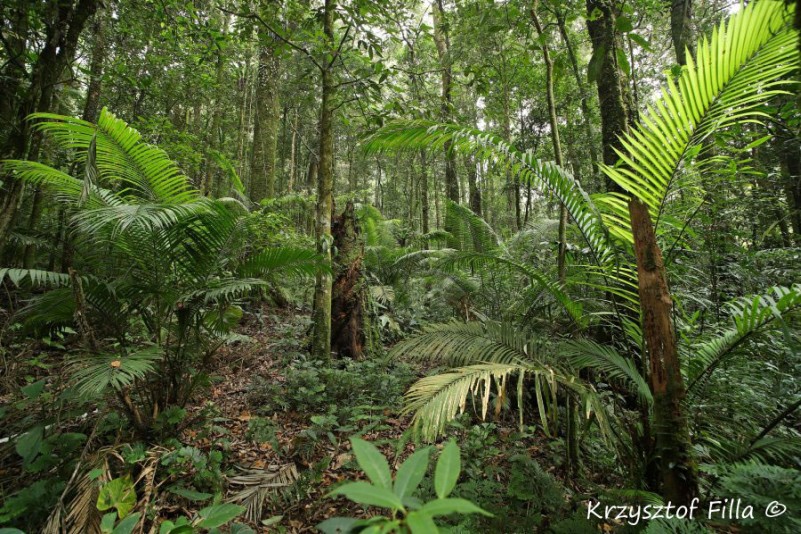
^ ^^^
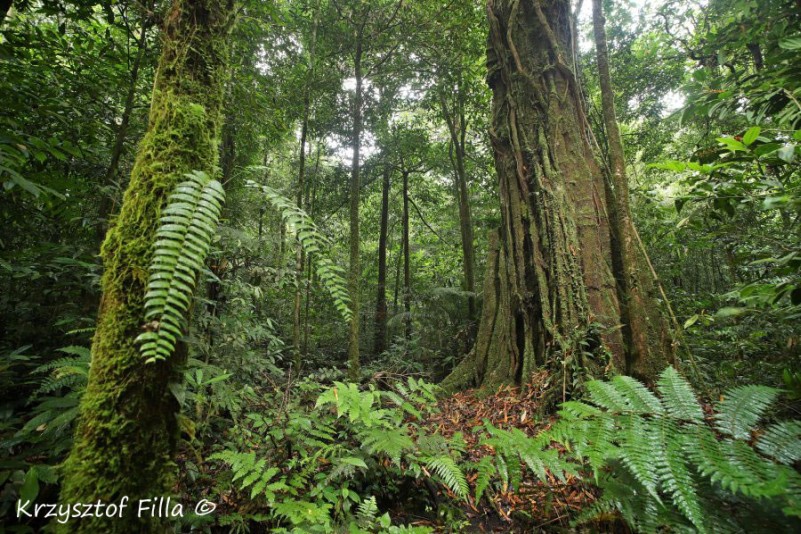
^ ^^^
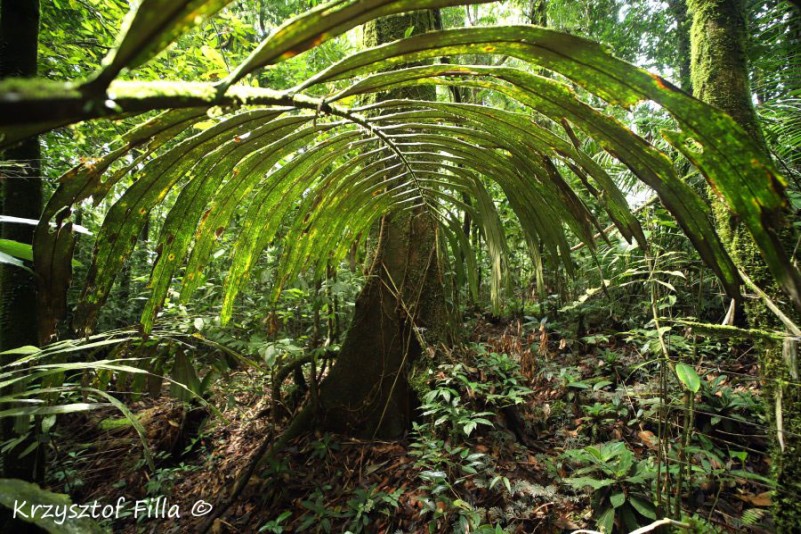
^ ^^^
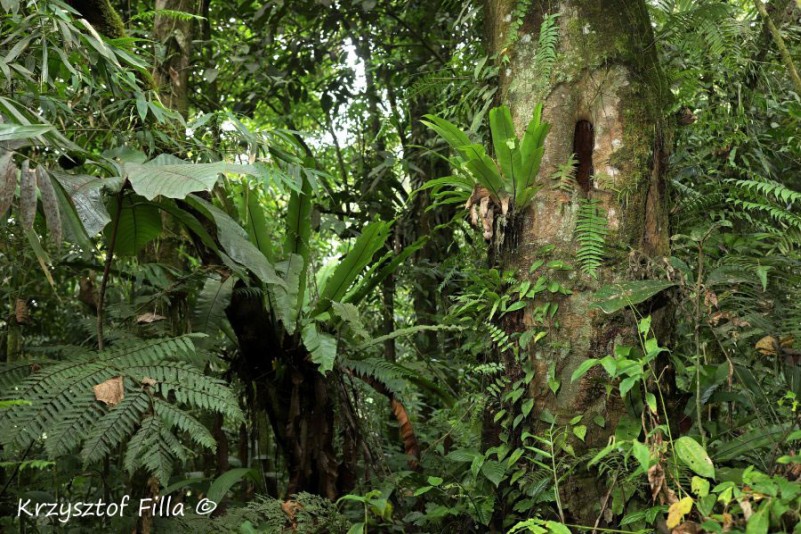
^ ^^^

^ ^^^
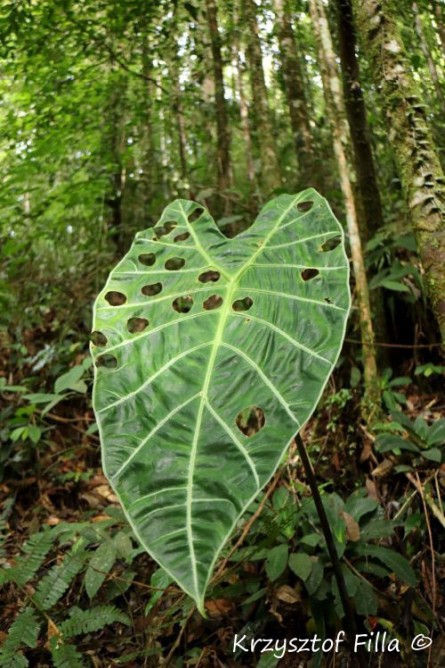
^ ^^^
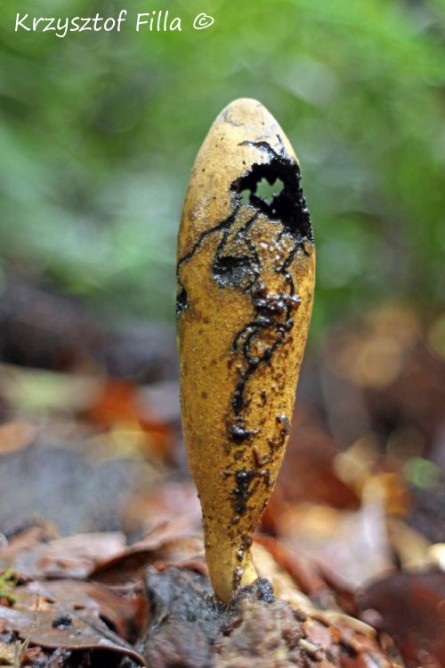
^ ^^^
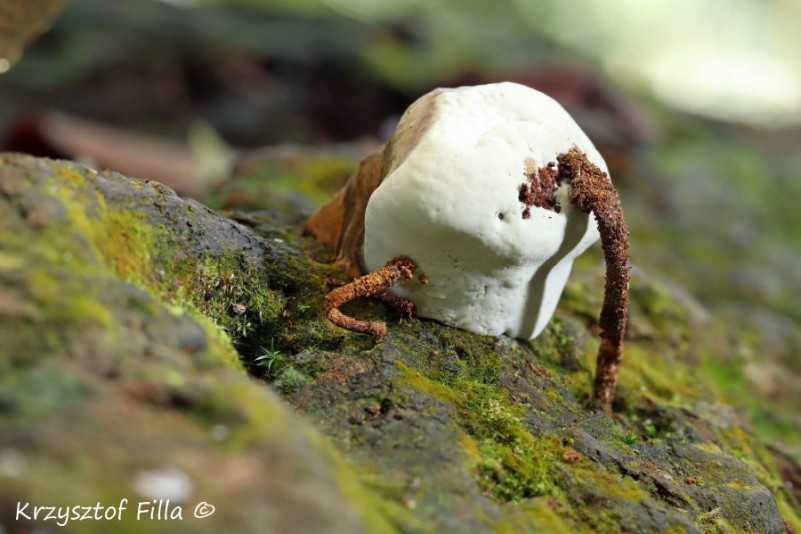
The brown, soft and flexible pipes attached to the mushroom are living organisms, that suck juices from the mushroom. Every now and then they moved slightly.
^ ^^^
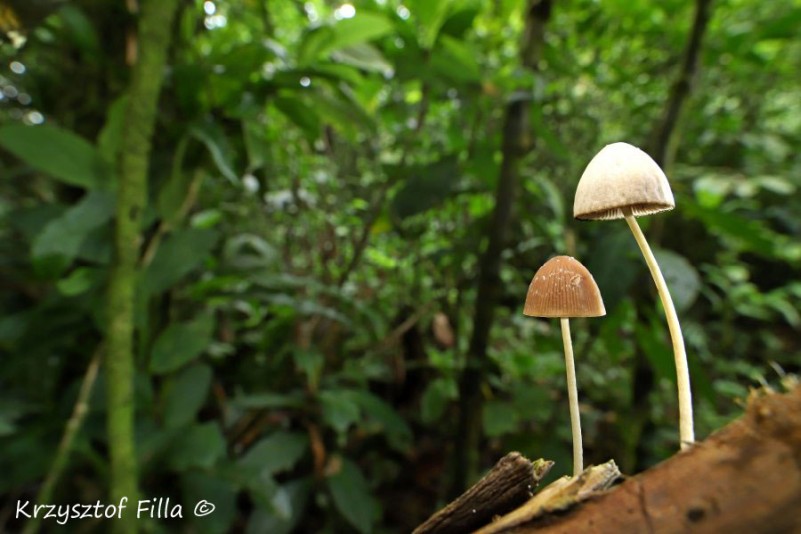
^ ^^^

^ ^^^

^ ^^^

^ ^^^
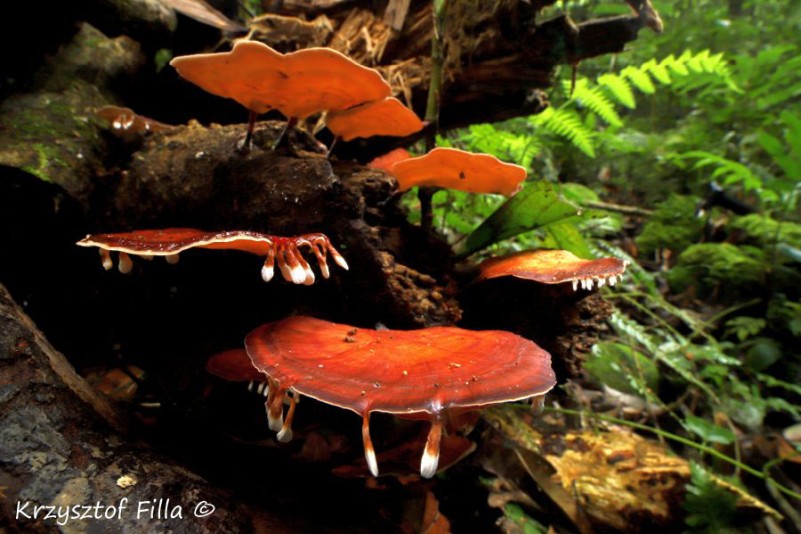
^ ^^^
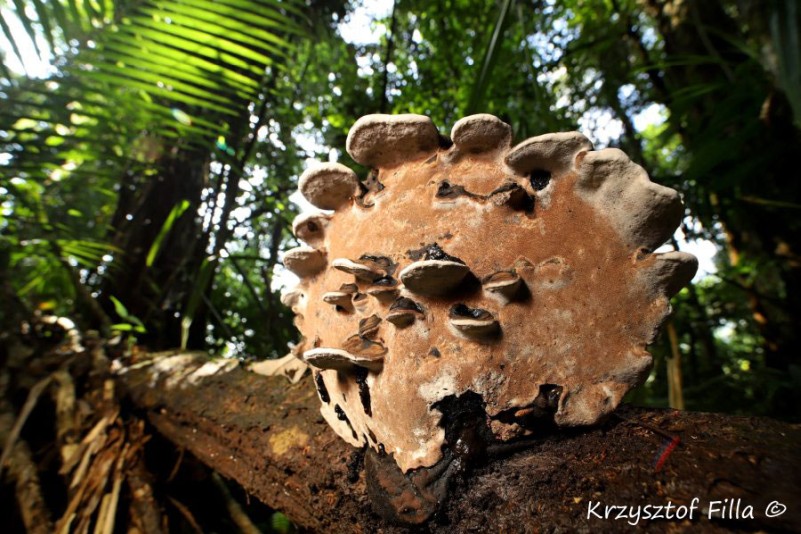
^ ^^^

^ ^^^
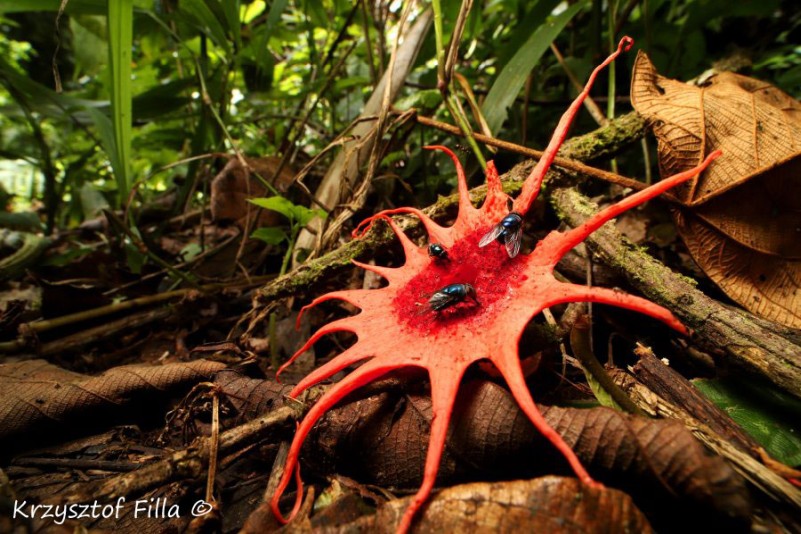
Anemone stinkhorn mushroom (Aseroe rubra) or starfish fungus. The mushroom has distinctive shape and smell that resembles faeces or carrion. It attracts flies, that pollinate the mushroom.
^ ^^^
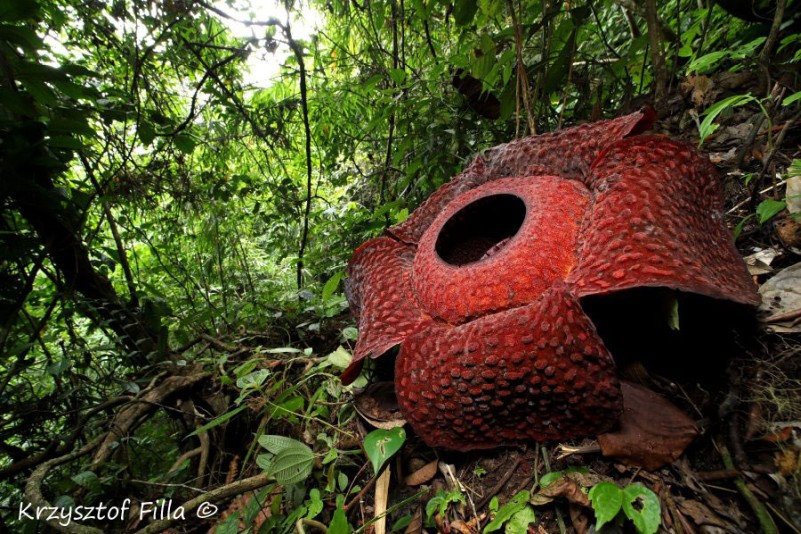
Rafflesia arnoldii (Rafflesia arnoldii). By local population it is called 'the corpse flower' because of its bad odour that reminds some sort of carrion, rotting meat. It is the largest flower in the world and includes 28 discovered subspecies only in S.E. Asia. Out of this 28 species, 6 coexist in Sumatra. The flower has 5 thick petals that resemble a hide. In the diameter it usually measures 90-100 cm. The largest on record had 120 cm. The weight is about 7-10 kg. and the heaviest had 16 kg.(source Wikipedia). The plant lacks leaves, stems or roots, it is a parasite that entirely lives inside a vine (Cissus).
^ ^^^
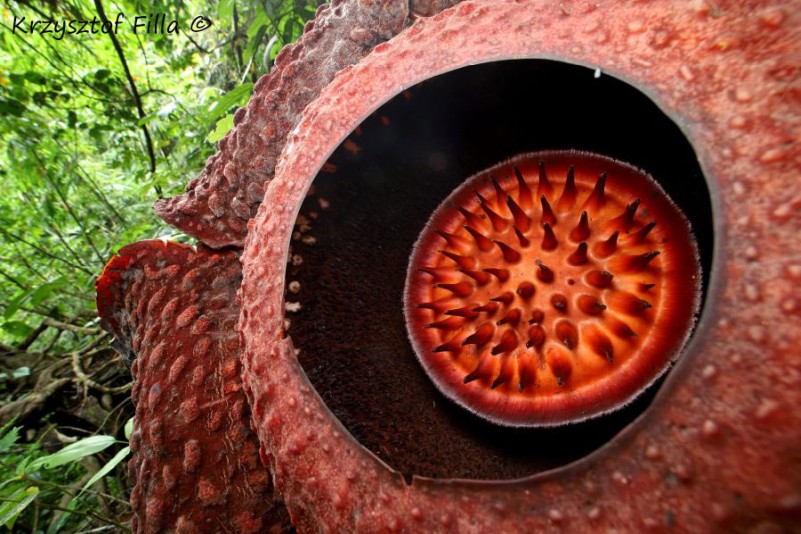
The interior of Rafflesia.
^ ^^^

Rafflesia arnoldii (Rafflesia arnoldii). Before blooming Rafflesia burgeons a bud that expands for a few months to the size of a cabbage (in the picture on the left). After opening it blooms for 3-5 days drawing carrion flies. Once it is pollinated it quickly, day by day, deteriorates and rots.
^ ^^^

^ ^^^

^ ^^^

These flowers open only during night.
^ ^^^
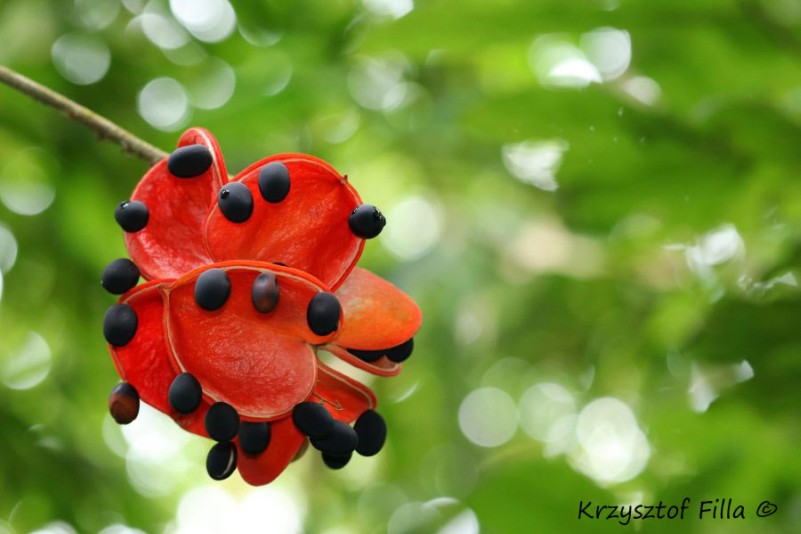
^ ^^^
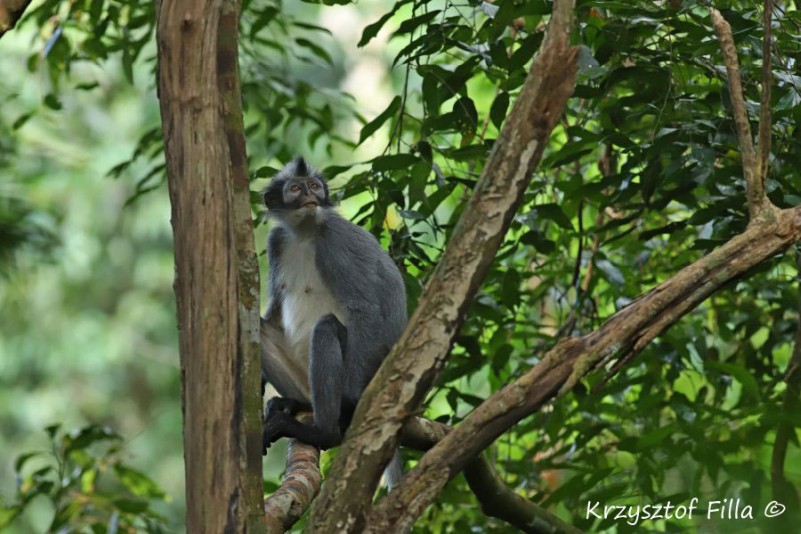
The Thomas's langur (Presbytis thomasi). It is endemic species that lives in the northern Sumatra. As most primates, it is important seed disperser. Due to its limited range of distribution and swiftly shrinking habitat, it's joined the number of other species in the red book of threaten species. In 2015 the monkey has received a status of 'endangered'.
^ ^^^
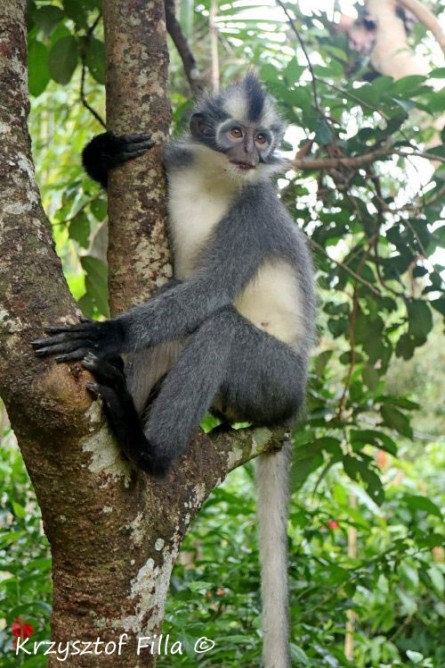
The Thomas's langur (Presbytis thomasi). Their house has been converted to planks and timber sold across the globe in retail centers such as IKEA. And their terrain has overgrown with a single species of tree mostly with the Oil Palm, they return with sentiment to their old land. In this way they gain a new status – they are the vermin. And in this way it gives the new owners a justified rights (in their understanding) to load under the monkey's skin a series of led pellets or live ammunition. As for most animals in Indonesia, even in the forest called National Park, they have no guarantee of safety or longevity, let alone any other forest still remaining and left for them.
^ ^^^
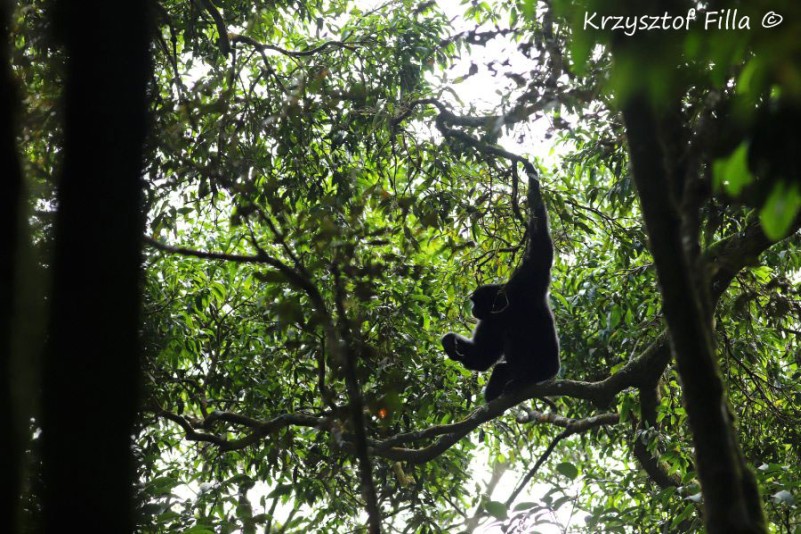
The siamang (Symphalangus syndactylus). Siamangs are close and bigger cousins of gibbons. Some of their characteristics are more athletic body shape and louder calls. In the same way as the gibbons, males and females join in monogamous relationships for lifetime. Groups consist of two adults and offspring that remain with them until they are 7-8 years old. They prefer to live in the lowland forest but because lowland forests are gone, they make living in the mountainous terrain.
^ ^^^
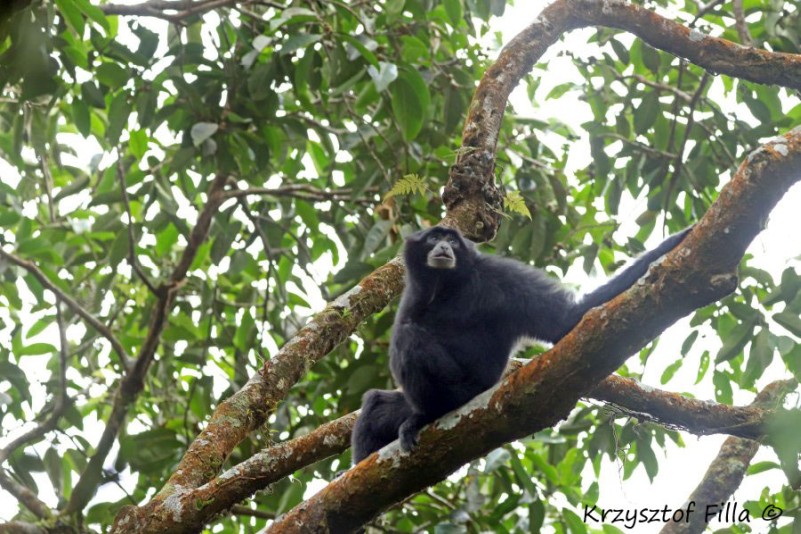
The siamang (Symphalangus syndactylus). They inhabit the island of Sumatra and small patch in the south of Malayan peninsula. They are very territorial and each group proclaim their position each day by loud calls. In the red book they have the status of endangered of extinction. As orangutans they are apes and their tail-bone is the same as in humans.
^ ^^^

In the rainforests of the new world (America), the voice of the howler monkeys resonates over the canopy. In South East Asia, it is the gibbon that act as main vocalist. Their repertoire is very extensive and the possibility of listening them alive from close distance is unforgeable experience.
^ ^^^
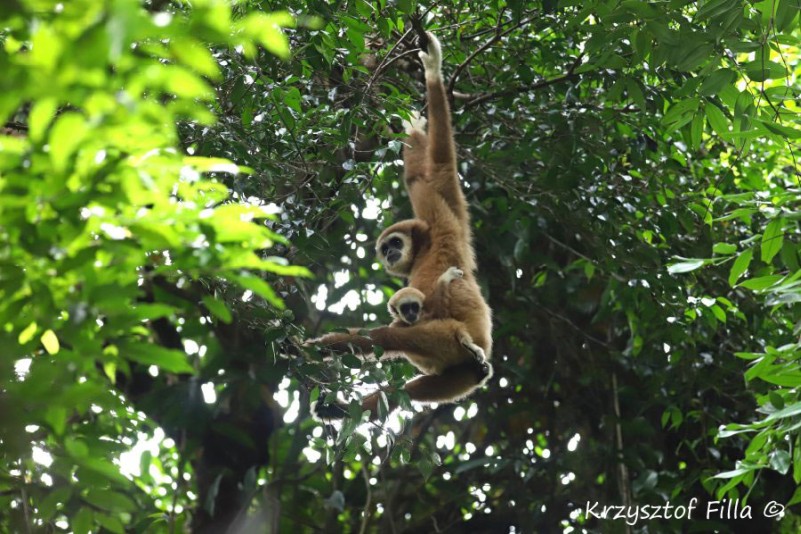
^ ^^^
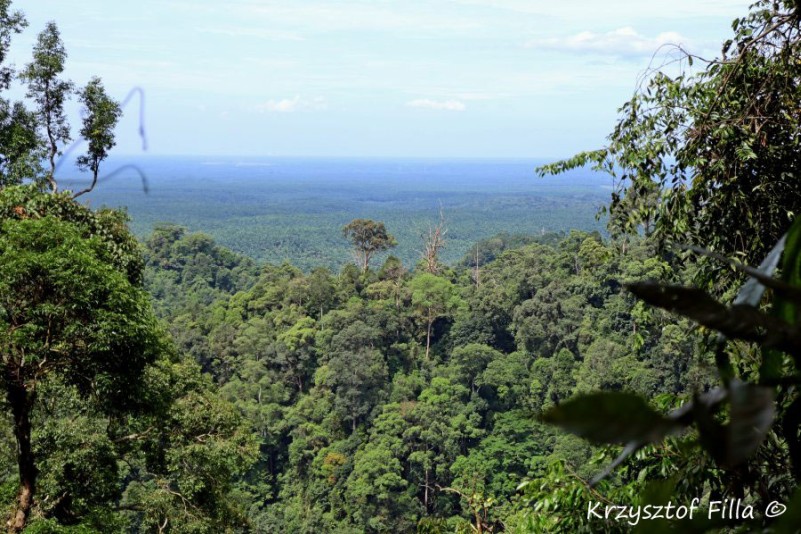
I try to remember if I have ever seen any jungle on flat land. No, I have never seen it. These terrains are the first to go to the contact with chainsaws, bulldozers and fires to prepare land for plantations. This picture taken from a hill depicts a lowland that stretches to the horizon for hundreds of kilometers. These are the commercial plantations of oil palm that will end up on the shelves of supermarkets across the world.
^ ^^^

This is a common site in forests, it is called selective logging. A tree is felled on the spot and converted to planks which are easier to transport by people.
^ ^^^
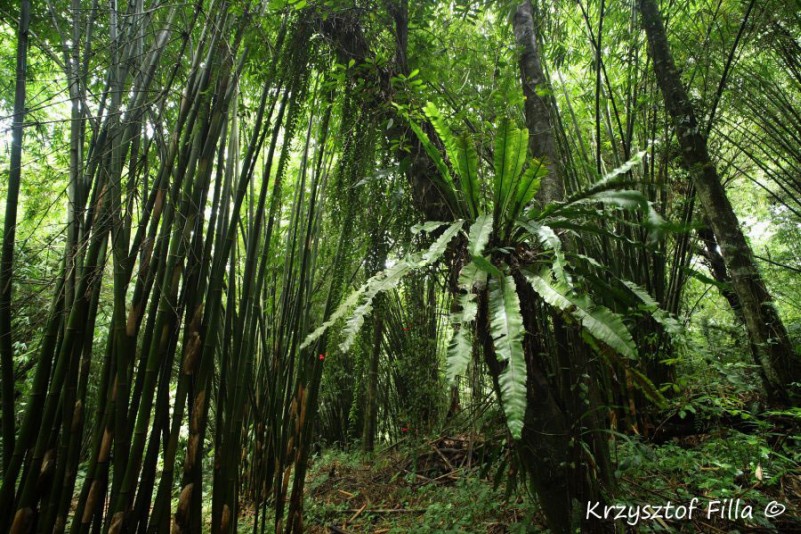
Very often in the place of removed forest or even on small plots, the land in natural way is dominated by bamboos as it is the fastest growing plant. After its expansion it creates thick shade that restrains most native trees and plants to grow.
^ ^^^

^ ^^^
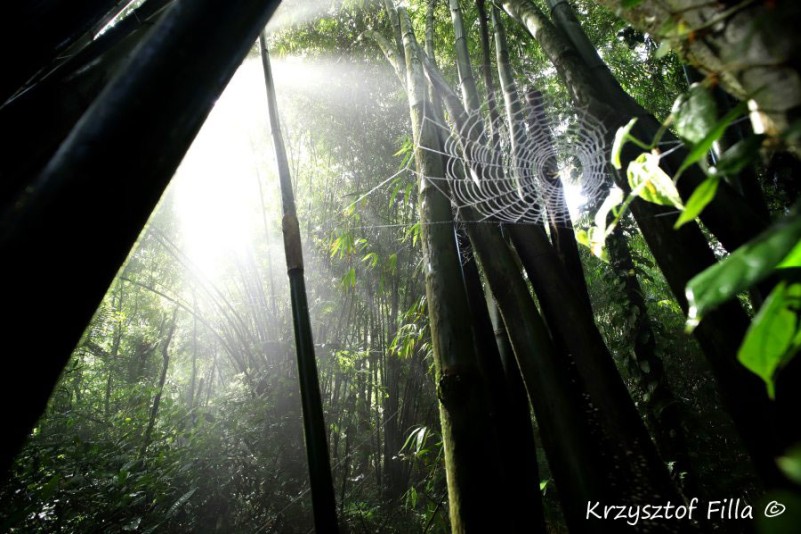
^ ^^^
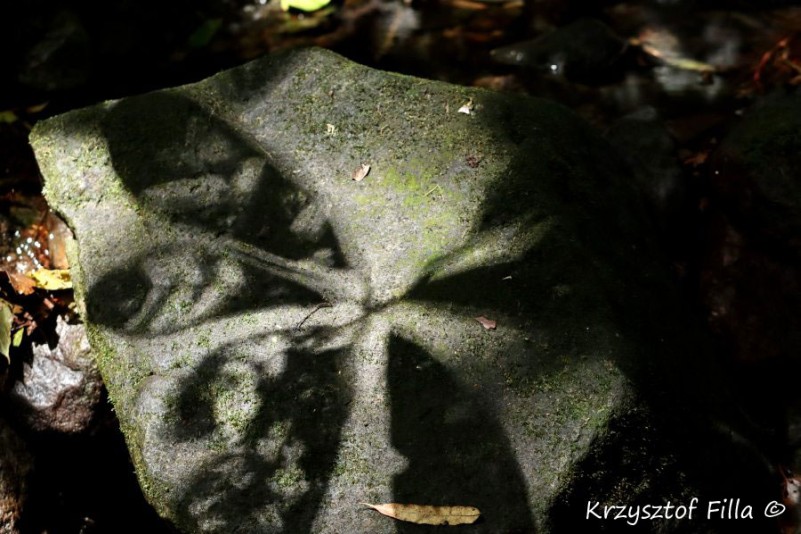
^ ^^^
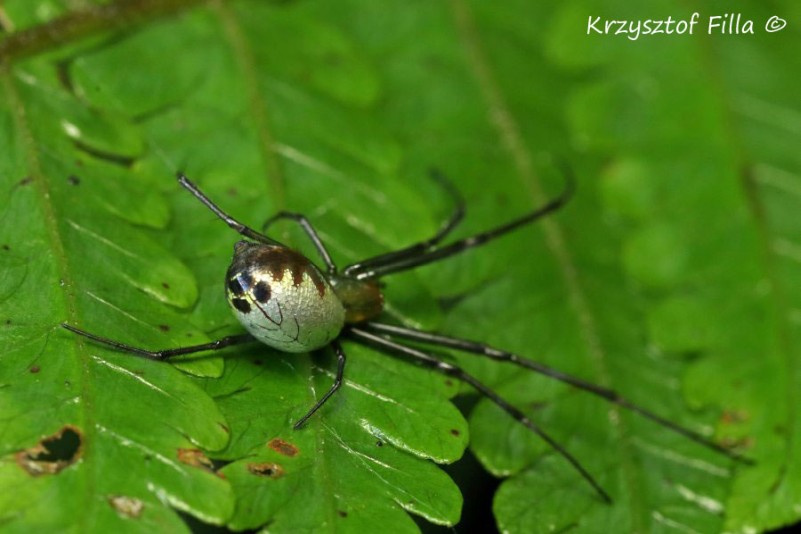
A silver Orb Spider.
^ ^^^
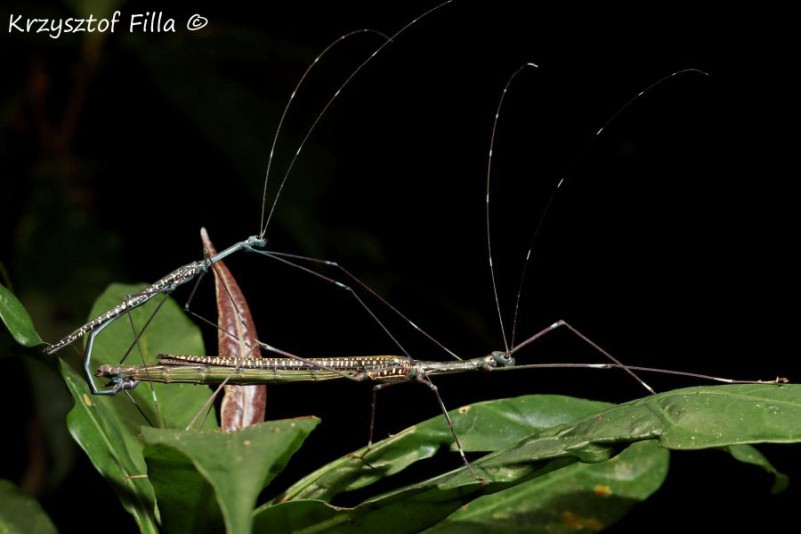
Copulating stick insects.
^ ^^^
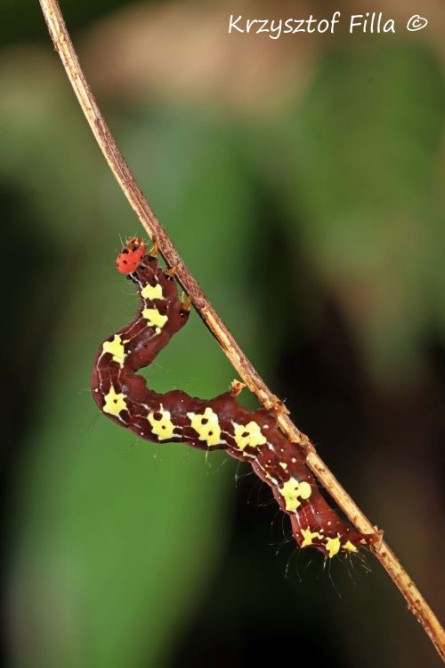
^ ^^^
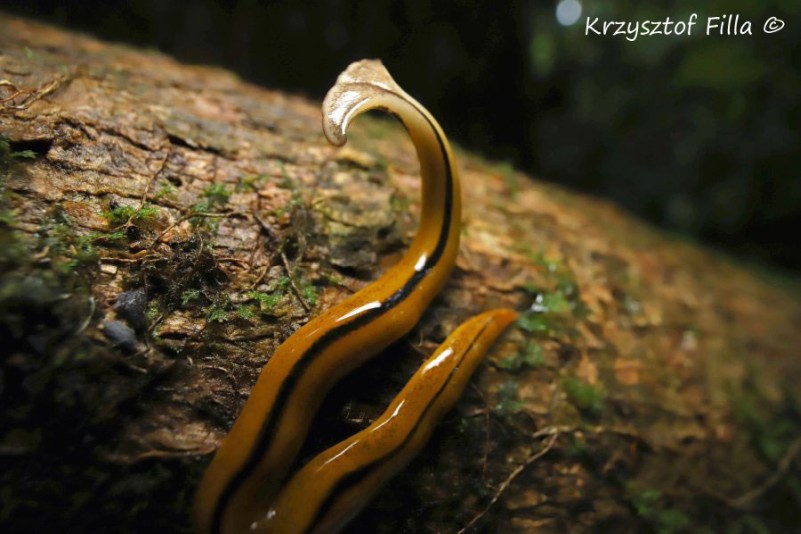
Bipalium , hammerhead worms, flat worm.
^ ^^^
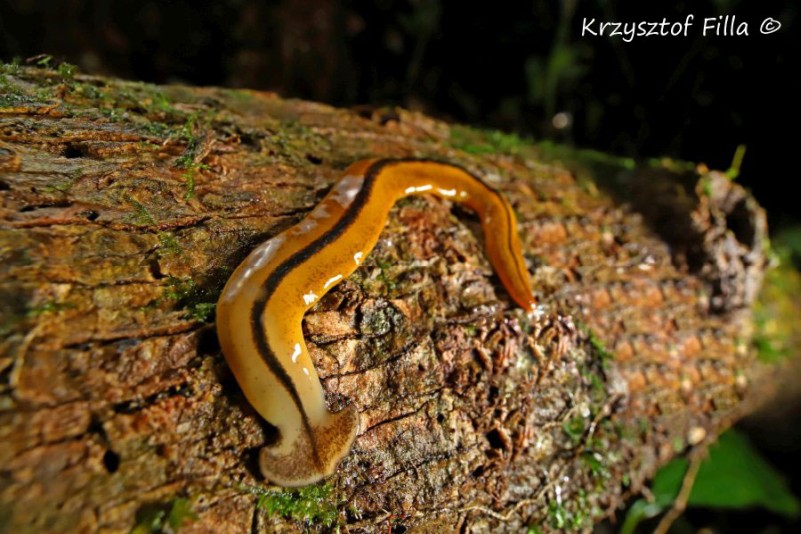
Bipalium , hammerhead worms, flat worm.
^ ^^^
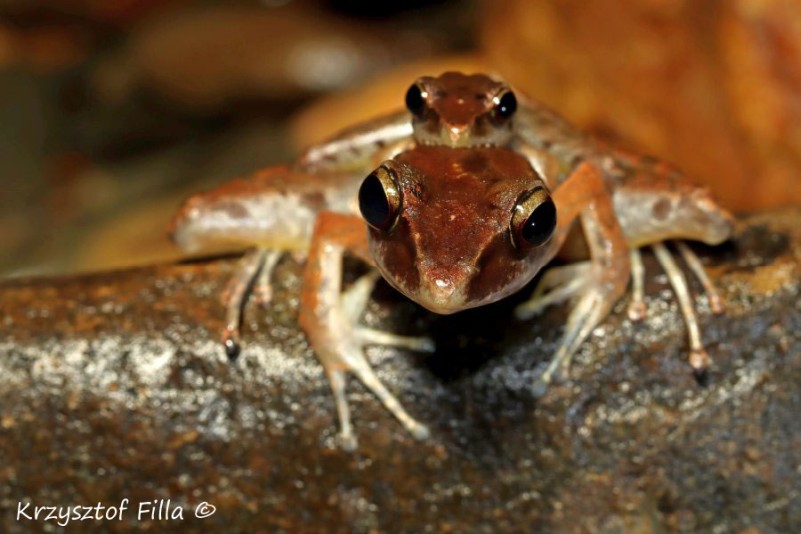
^ ^^^
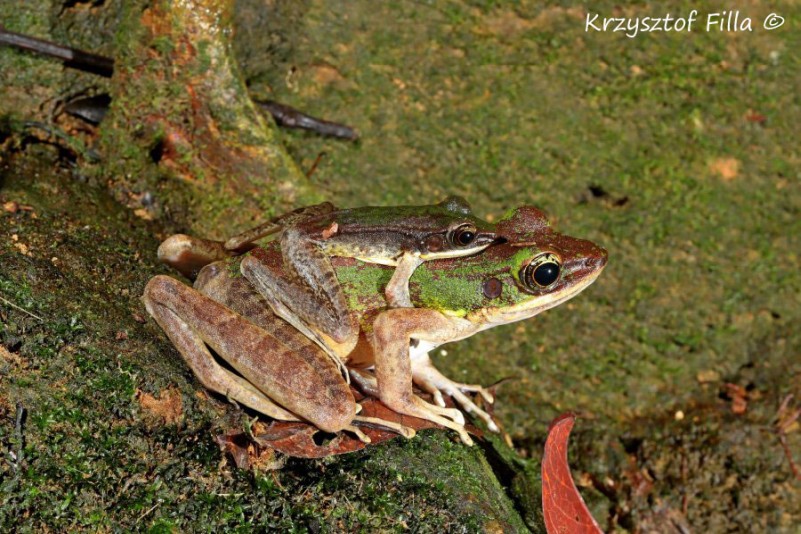
^ ^^^
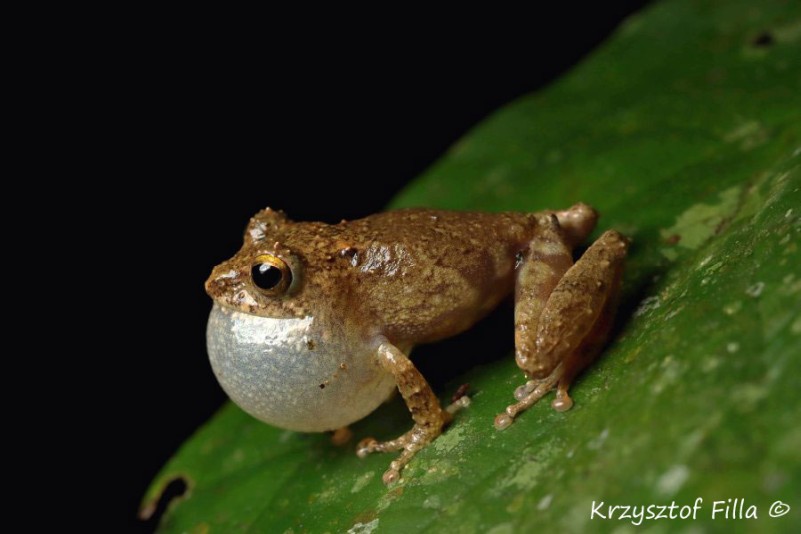
^ ^^^
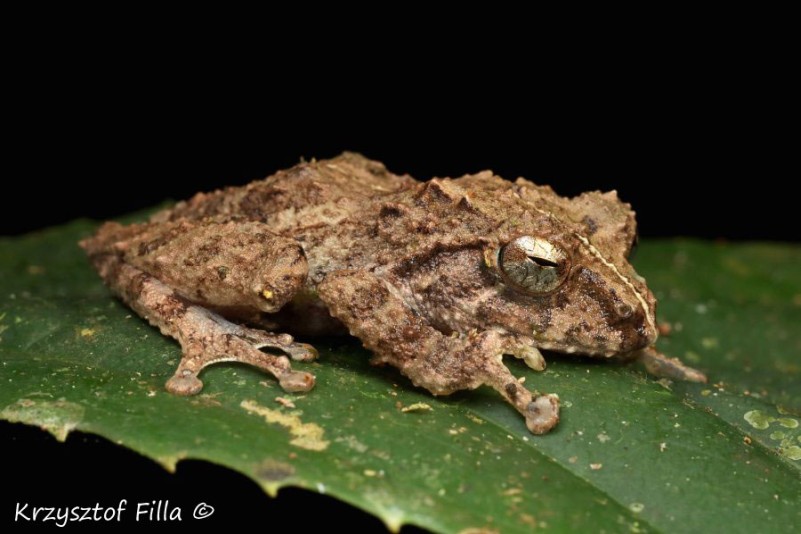
^ ^^^
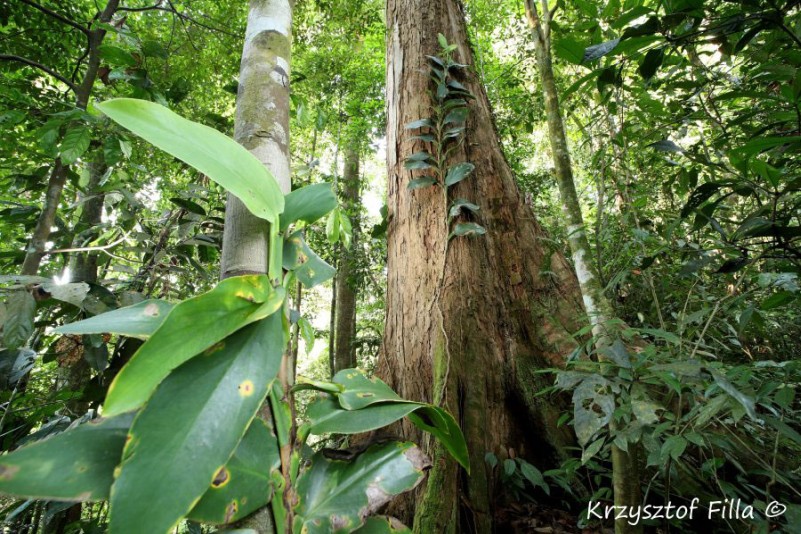
The Common Gliding Lizard (Draco sumatranus).
^ ^^^
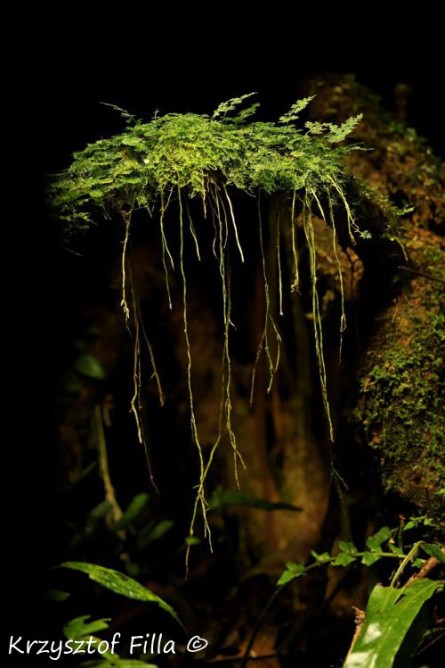
^ ^^^

Mosses remind small forest in a big forest. They overgrow stones, trunks, branches and even leaves. This qualifies them to plants called epiphytes. Their velvet surface provides shelter for many small creatures and organisms and for some it is a pasture supplying food.
^ ^^^
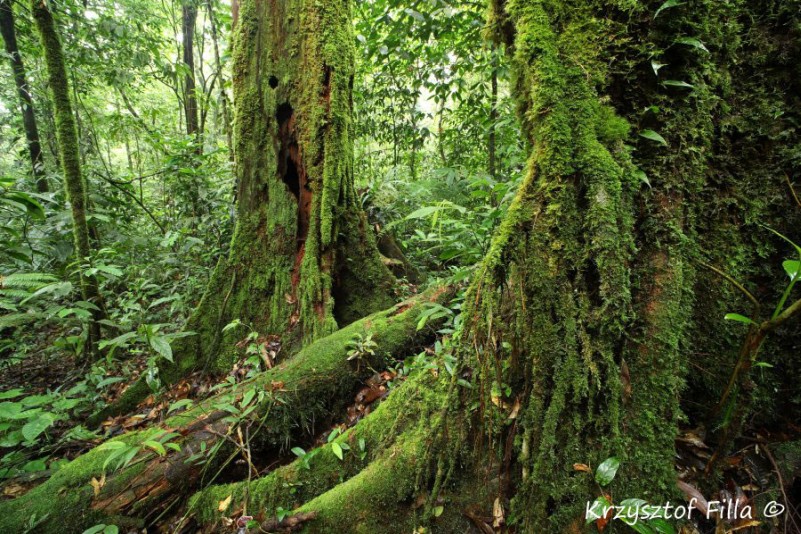
With some species of mosses cyanobacteria coexist, which can fix nitrogen from the air. Plants alone cannot do it and this element is essential for them to make cells for their growth. Mosses catch moisture from the air and store it as a wet sponge for the benefit of the entire forest.
^ ^^^
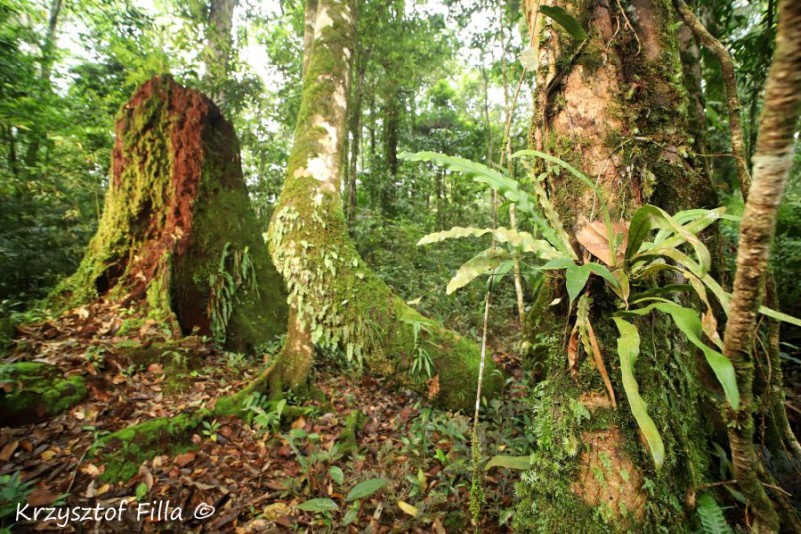
^ ^^^
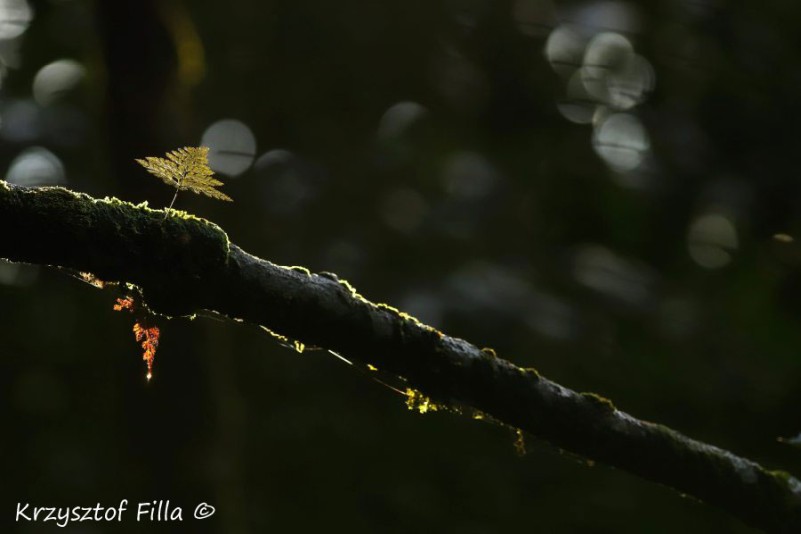
^ ^^^
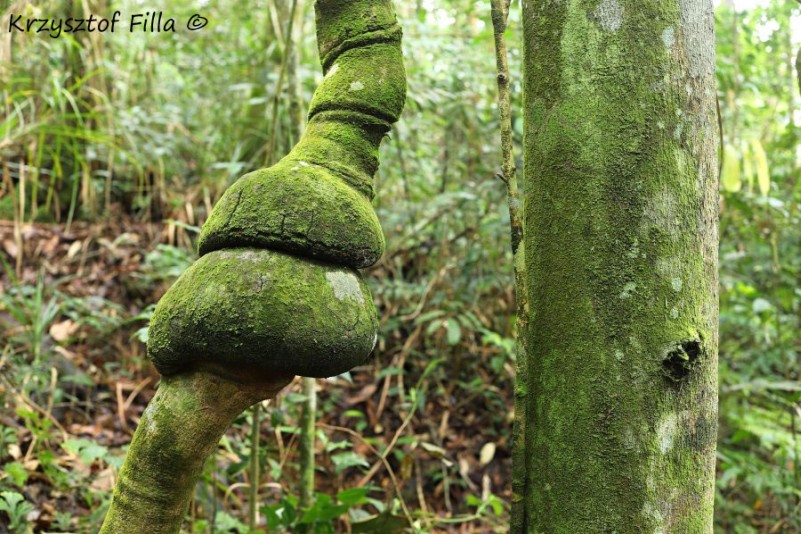
^ ^^^
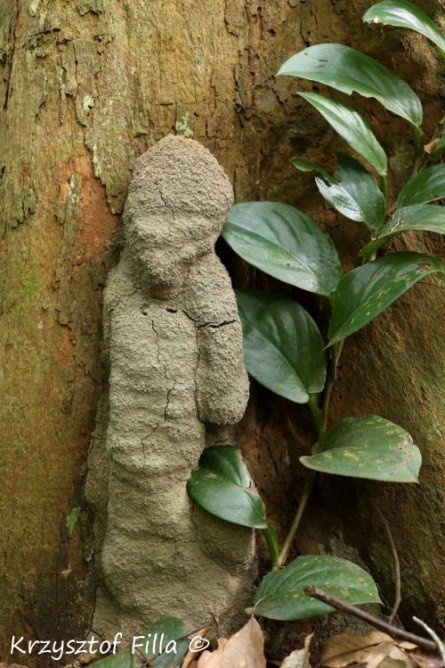
At the base of a tree trunk a termite ventilation tower. It resembled a small effigy.
^ ^^^

This ribbon like forms is resin oozing from a tree trunk.
^ ^^^

^ ^^^
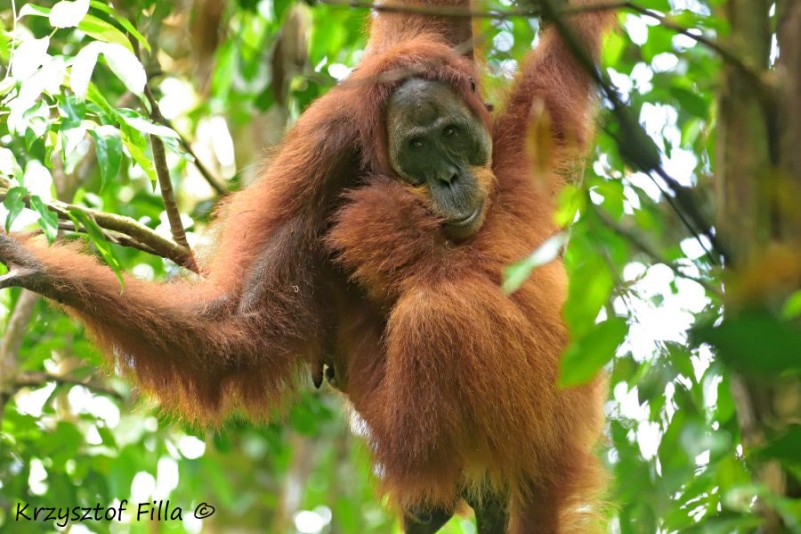
A juvenile orangutan hugs to his mom.
^ ^^^
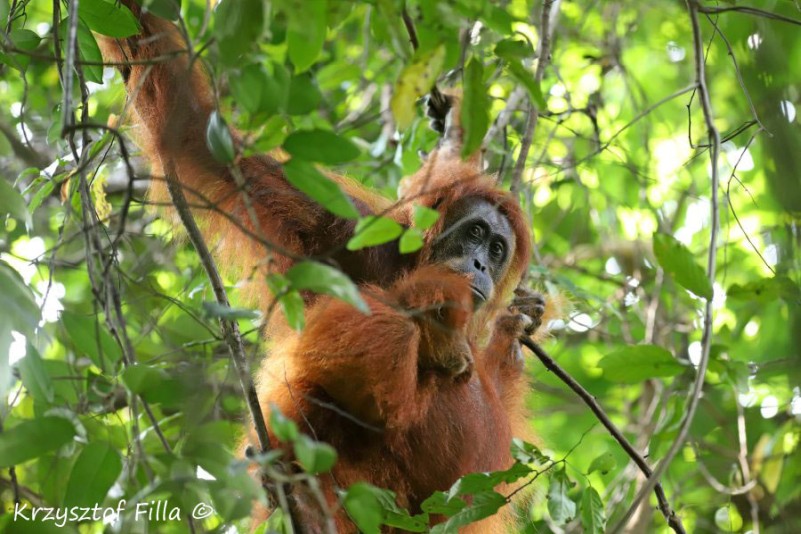
A female with a young.
^ ^^^
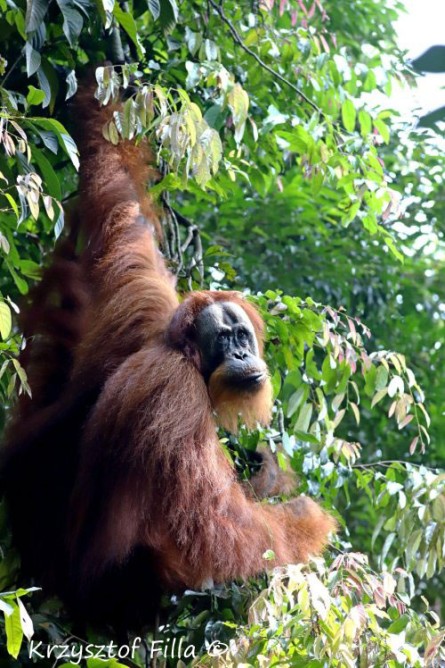
^ ^^^
















































































































































